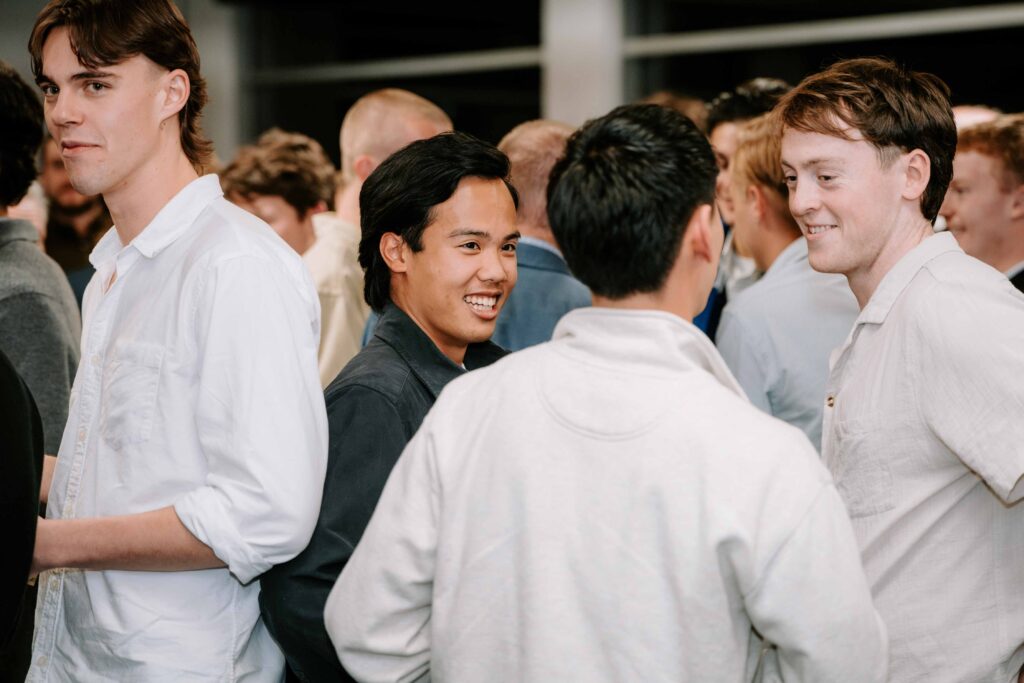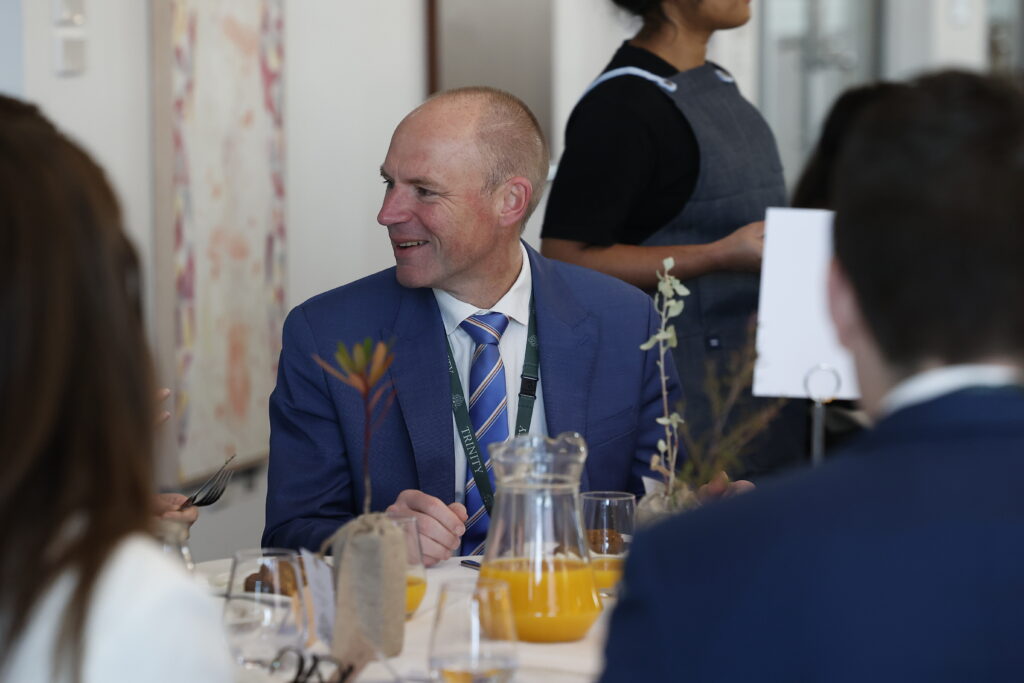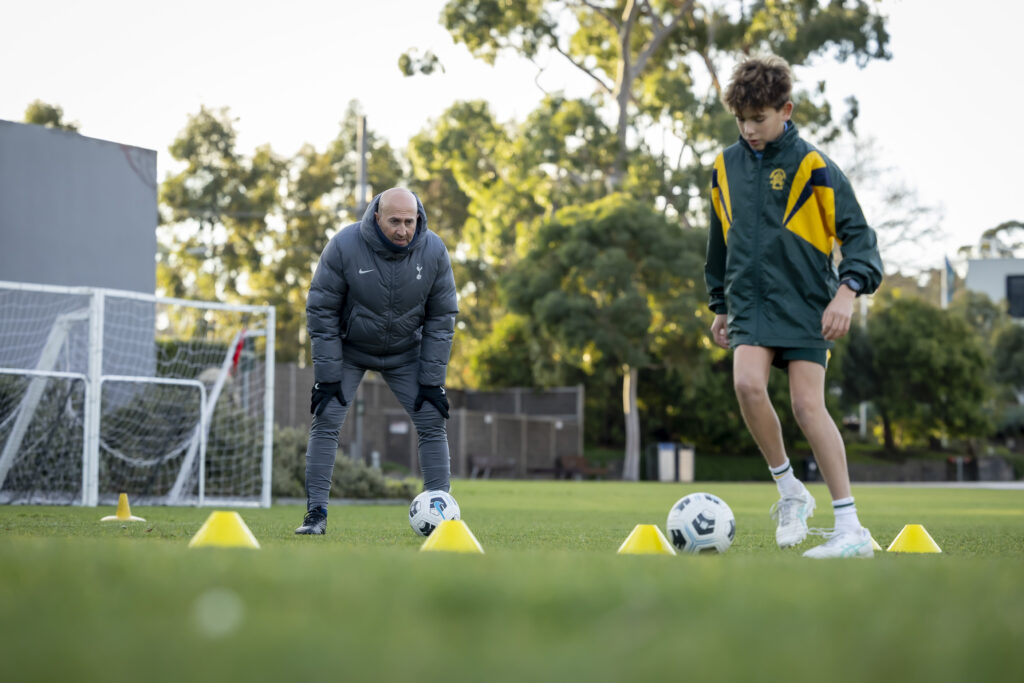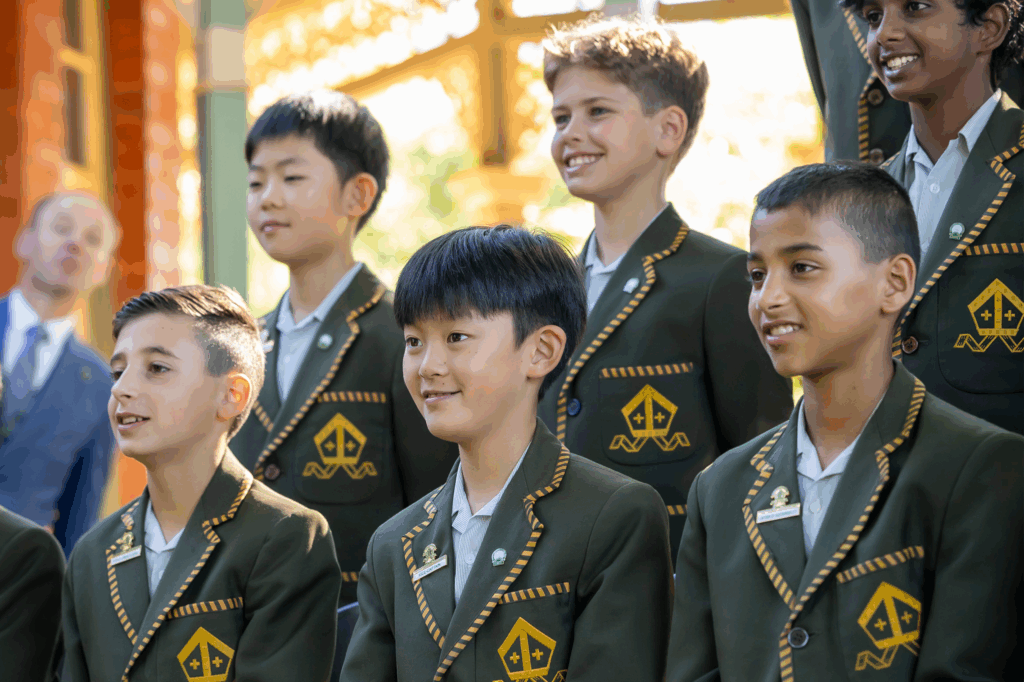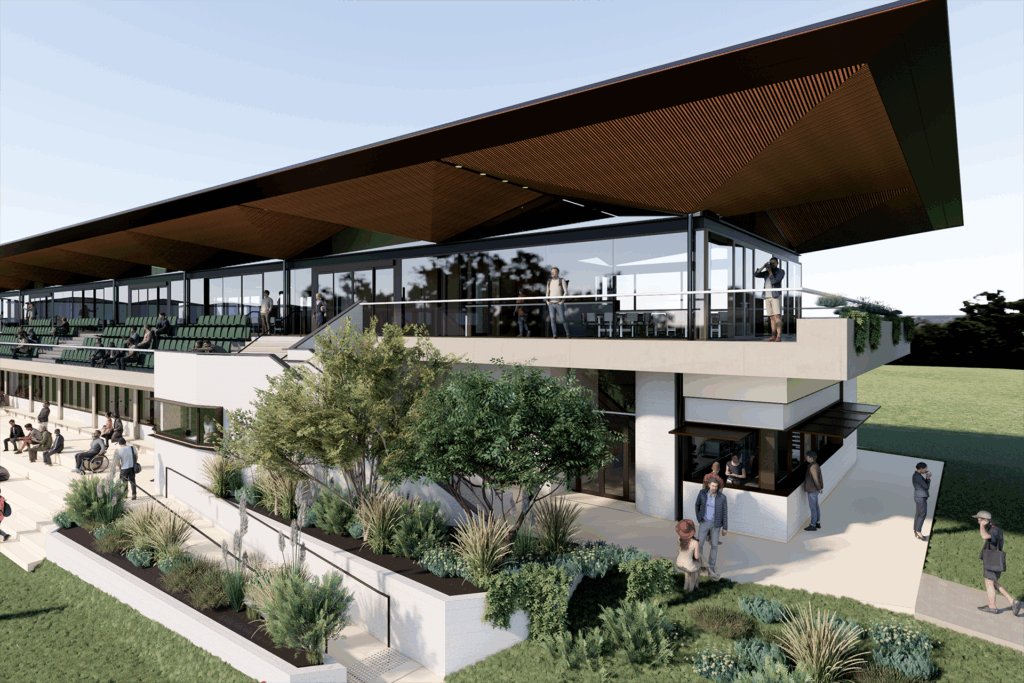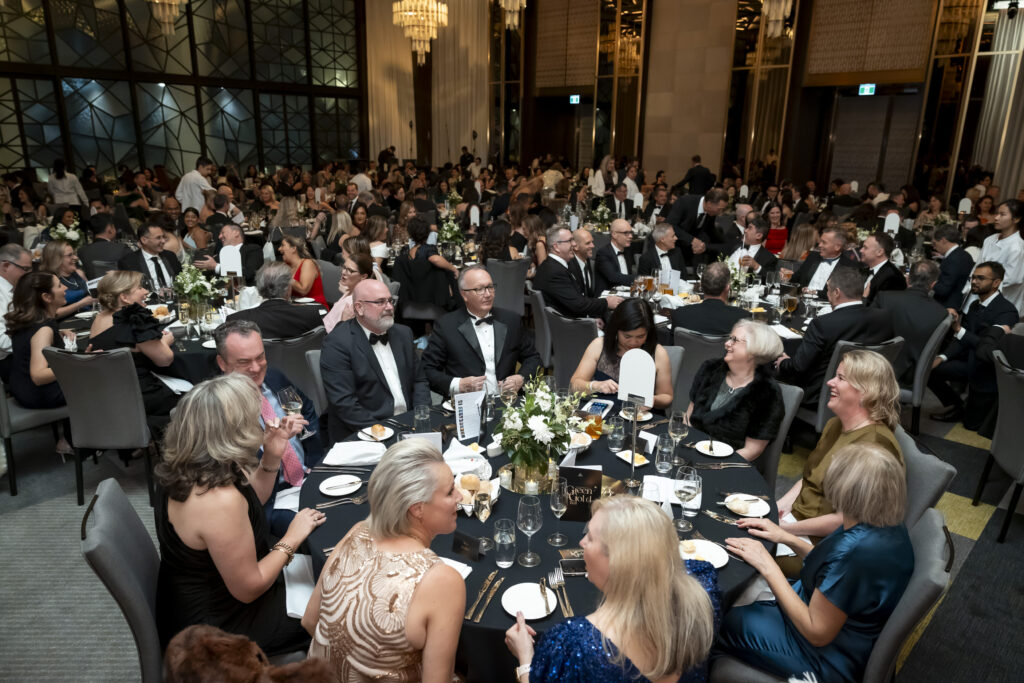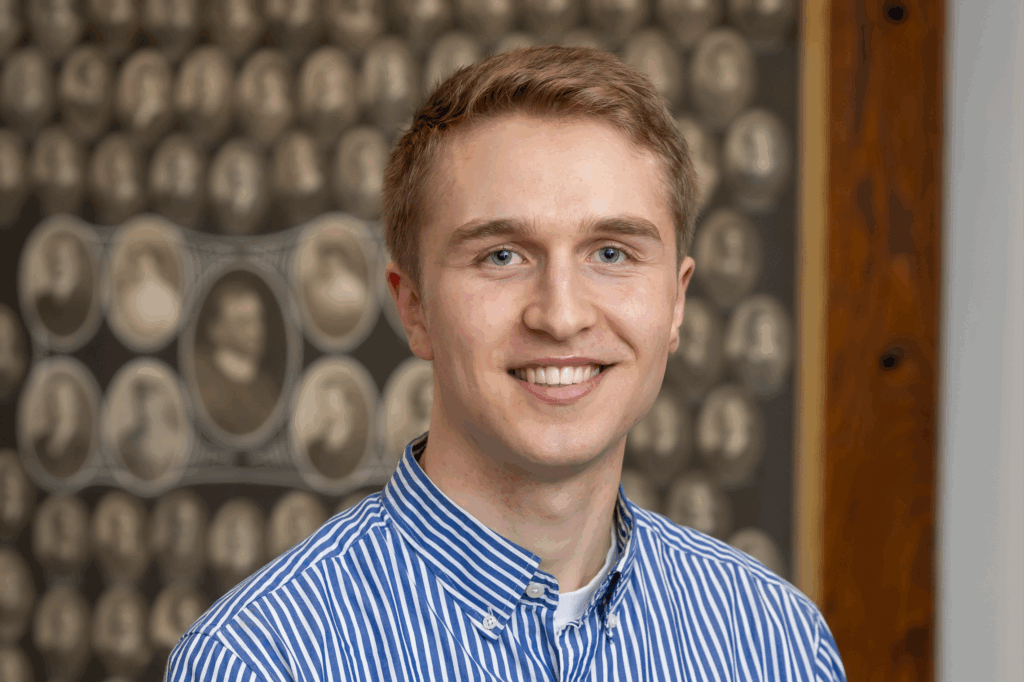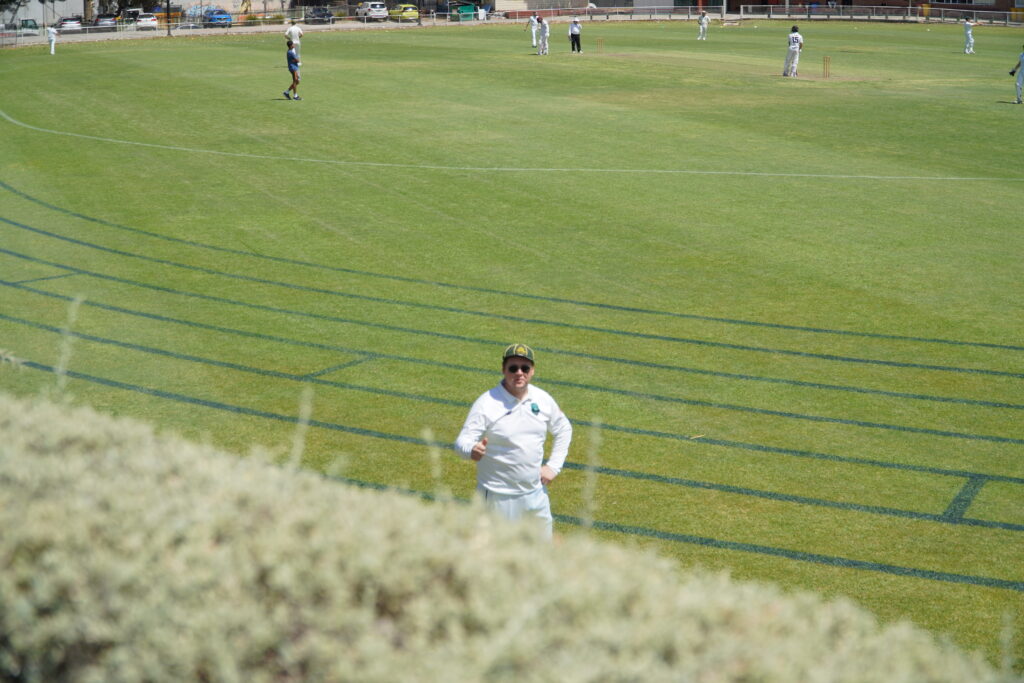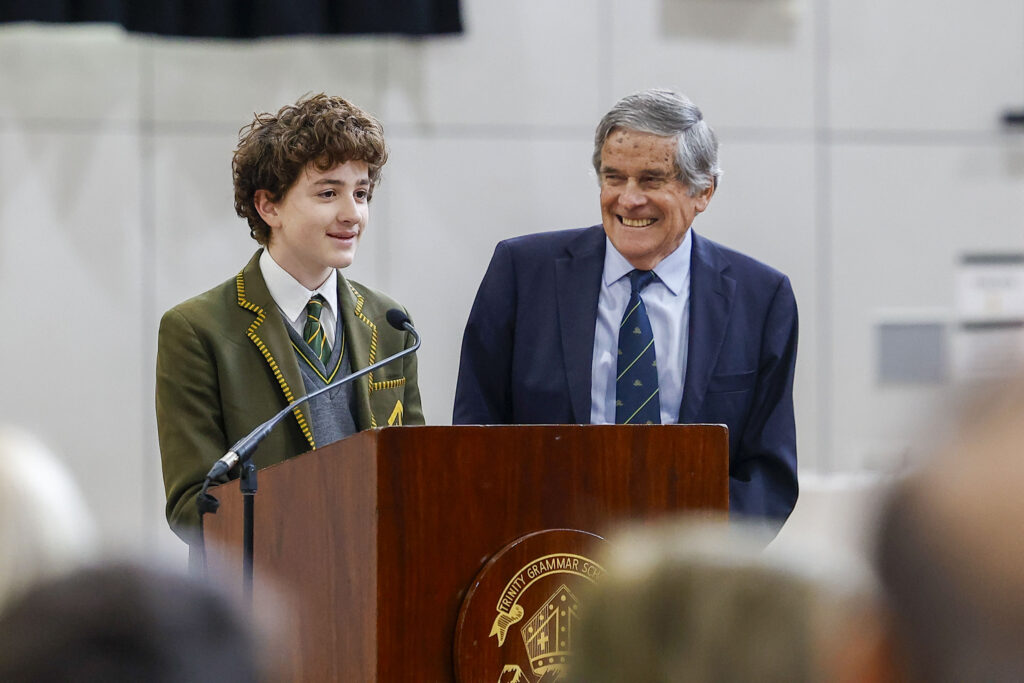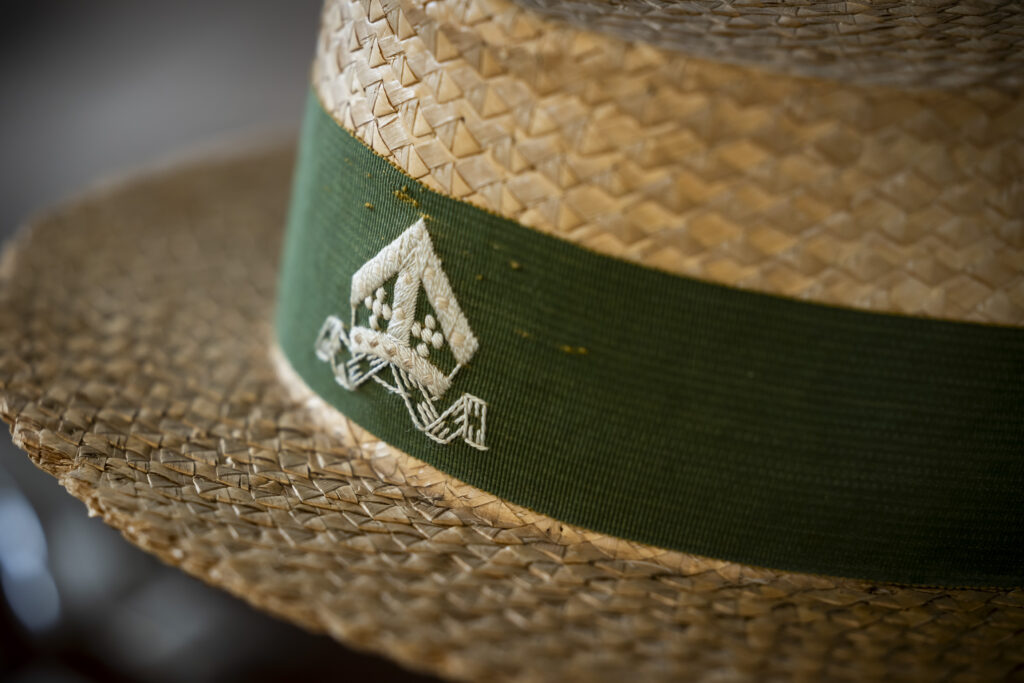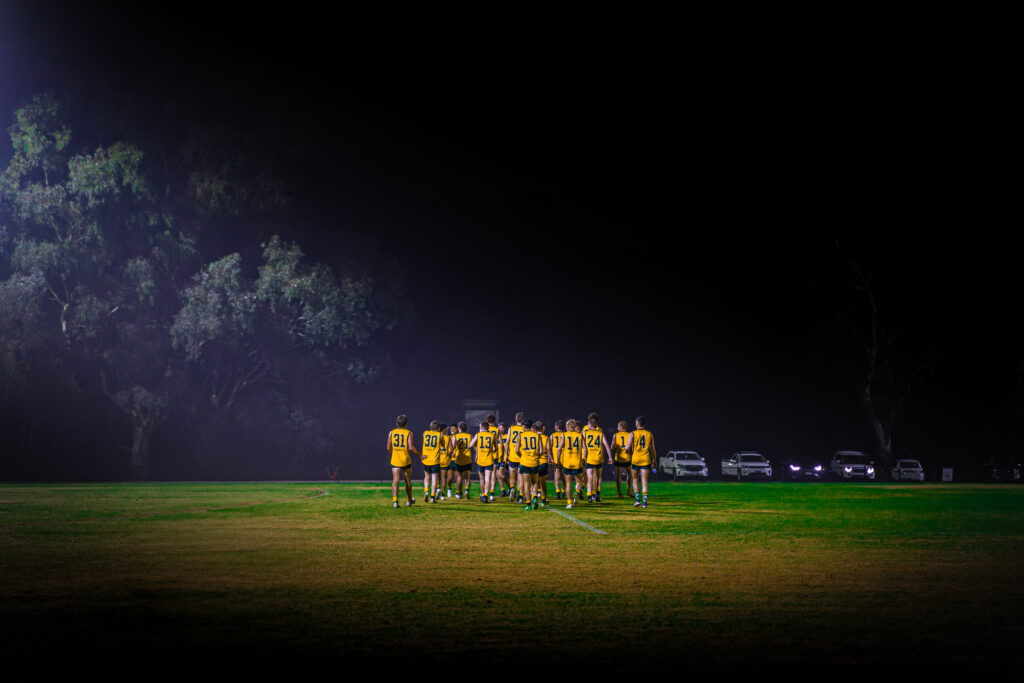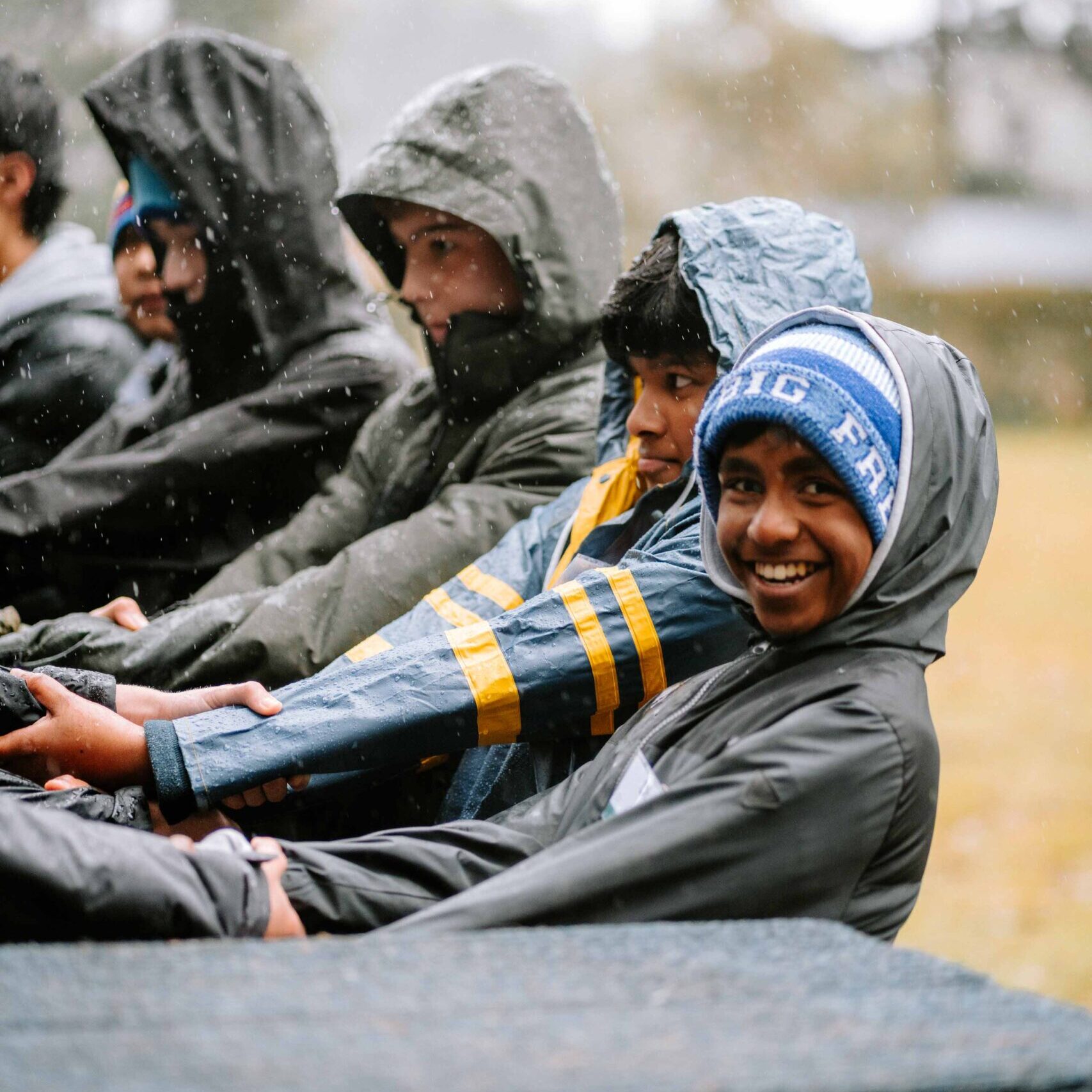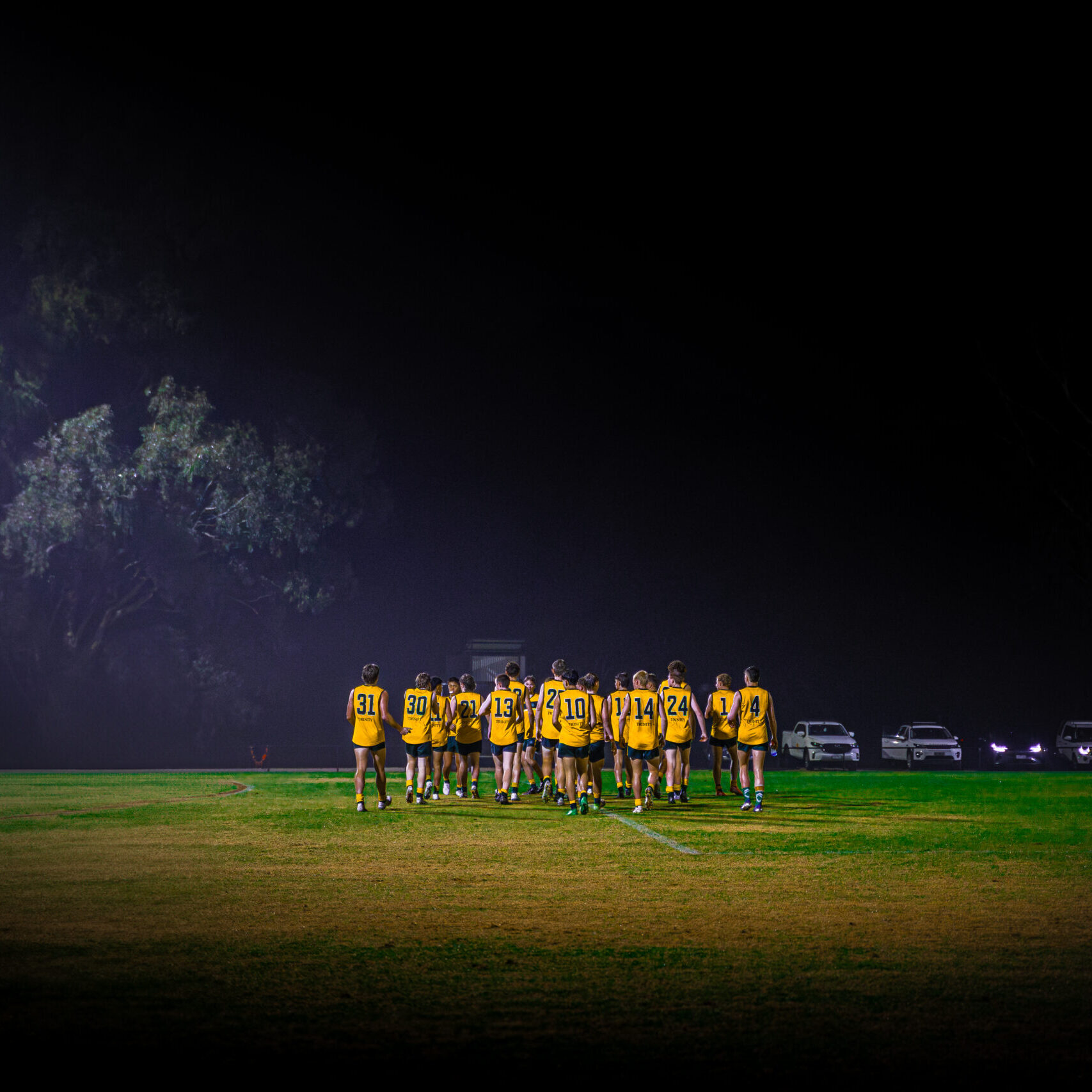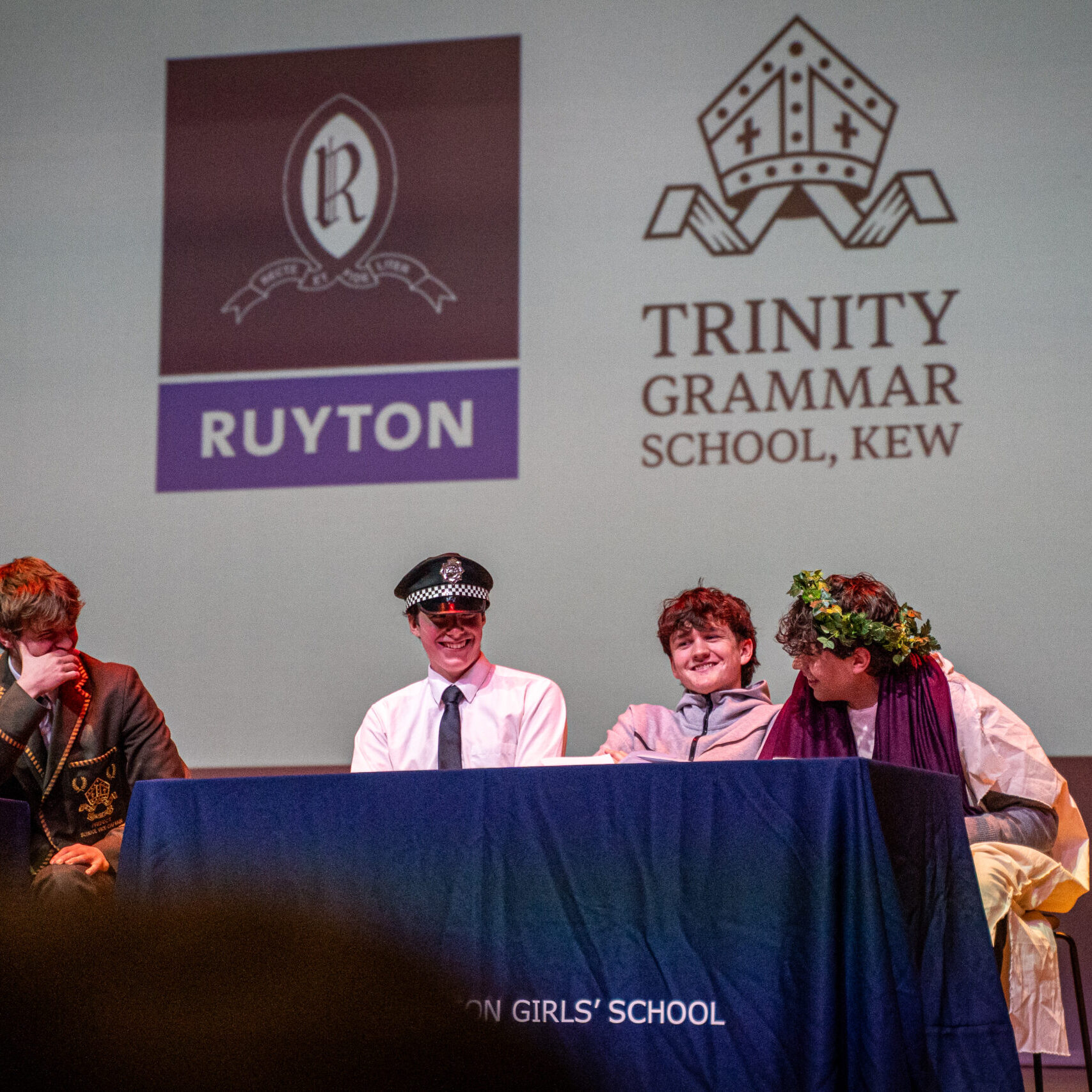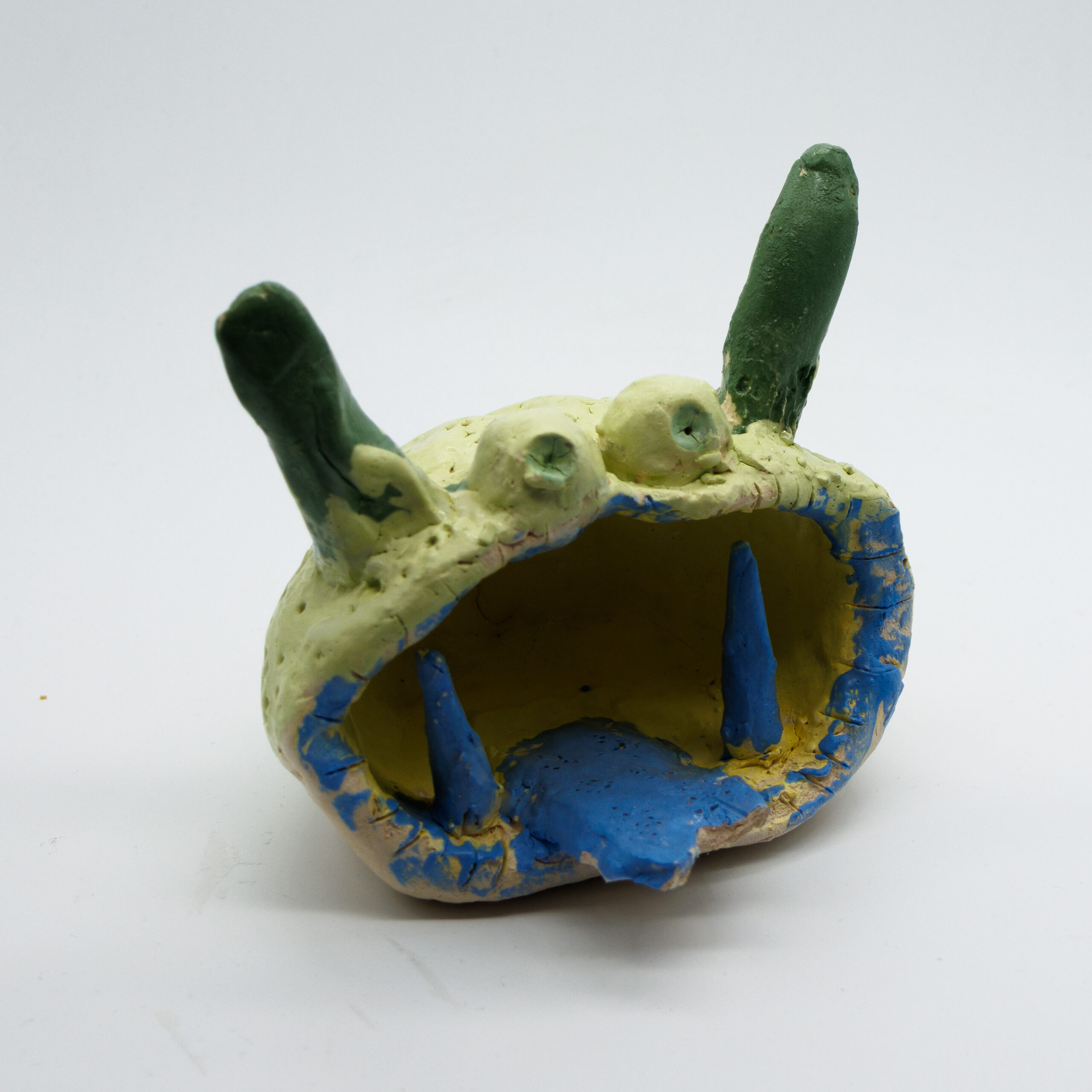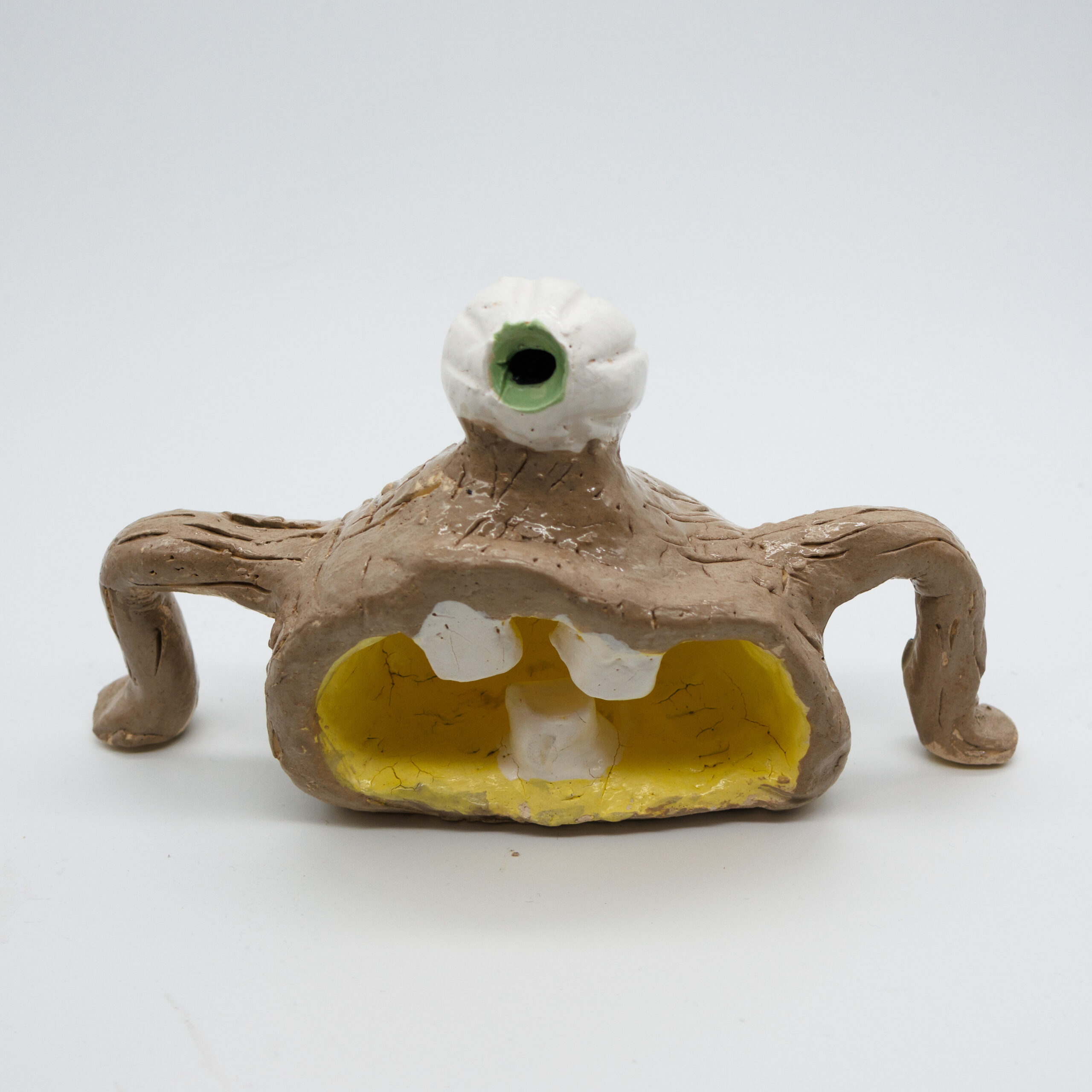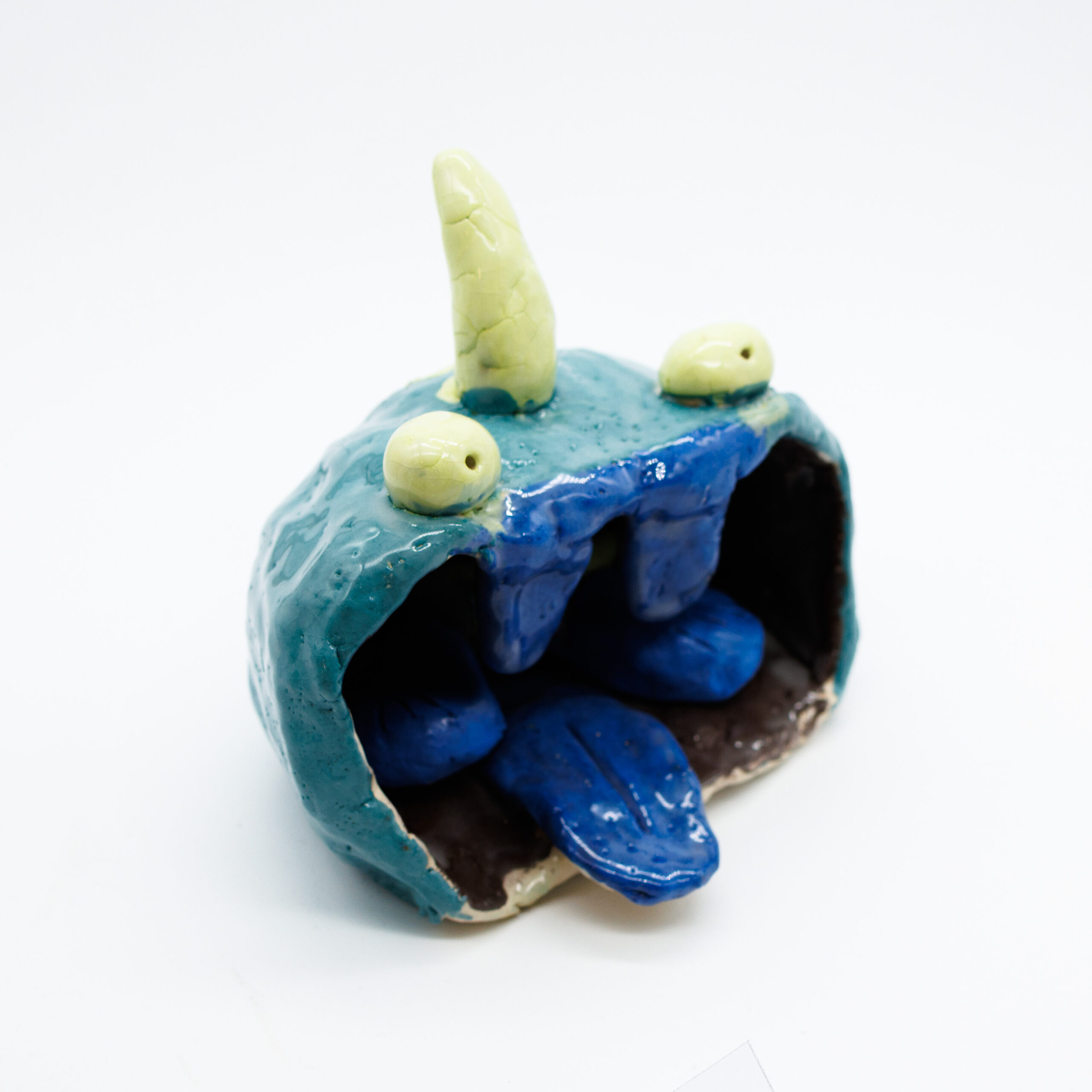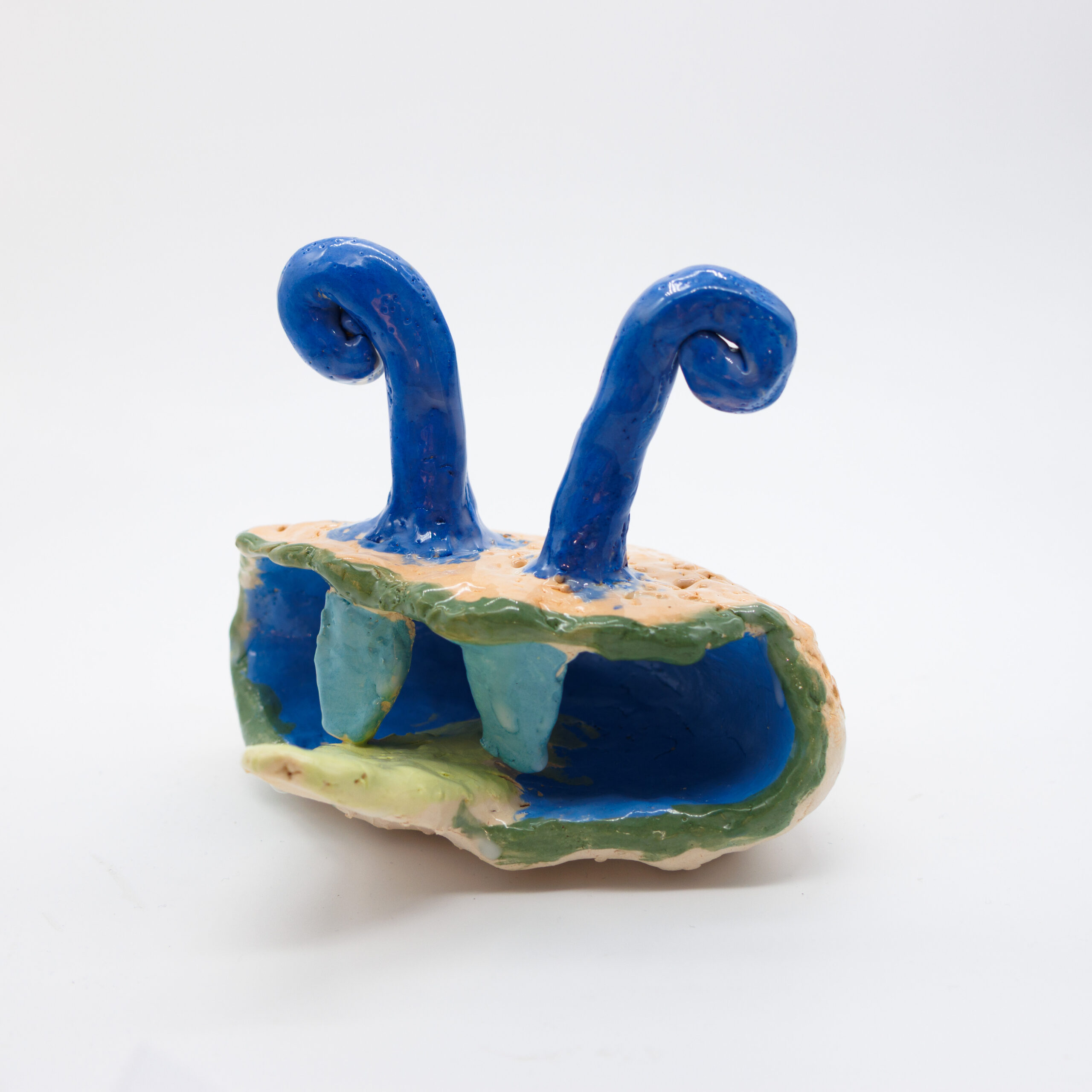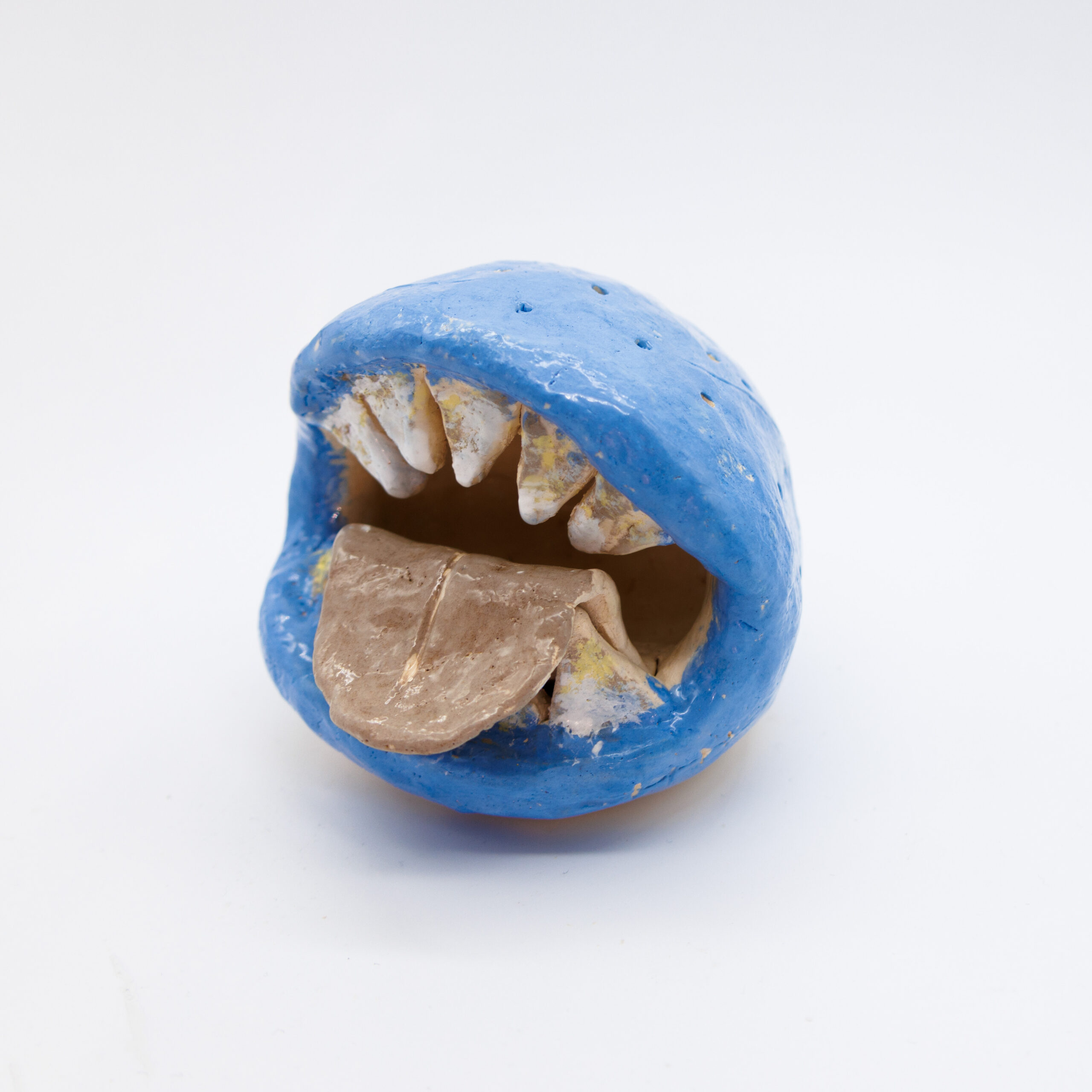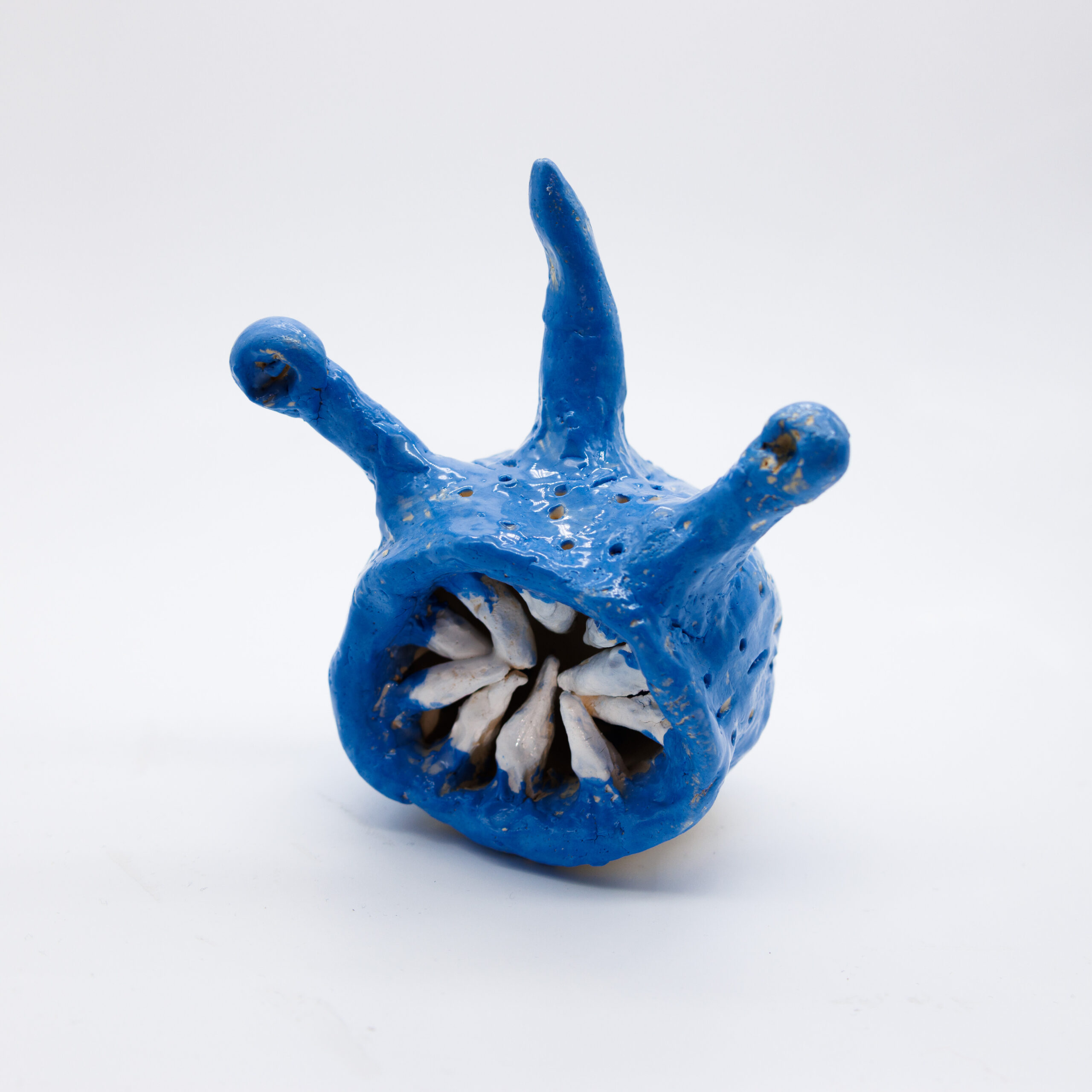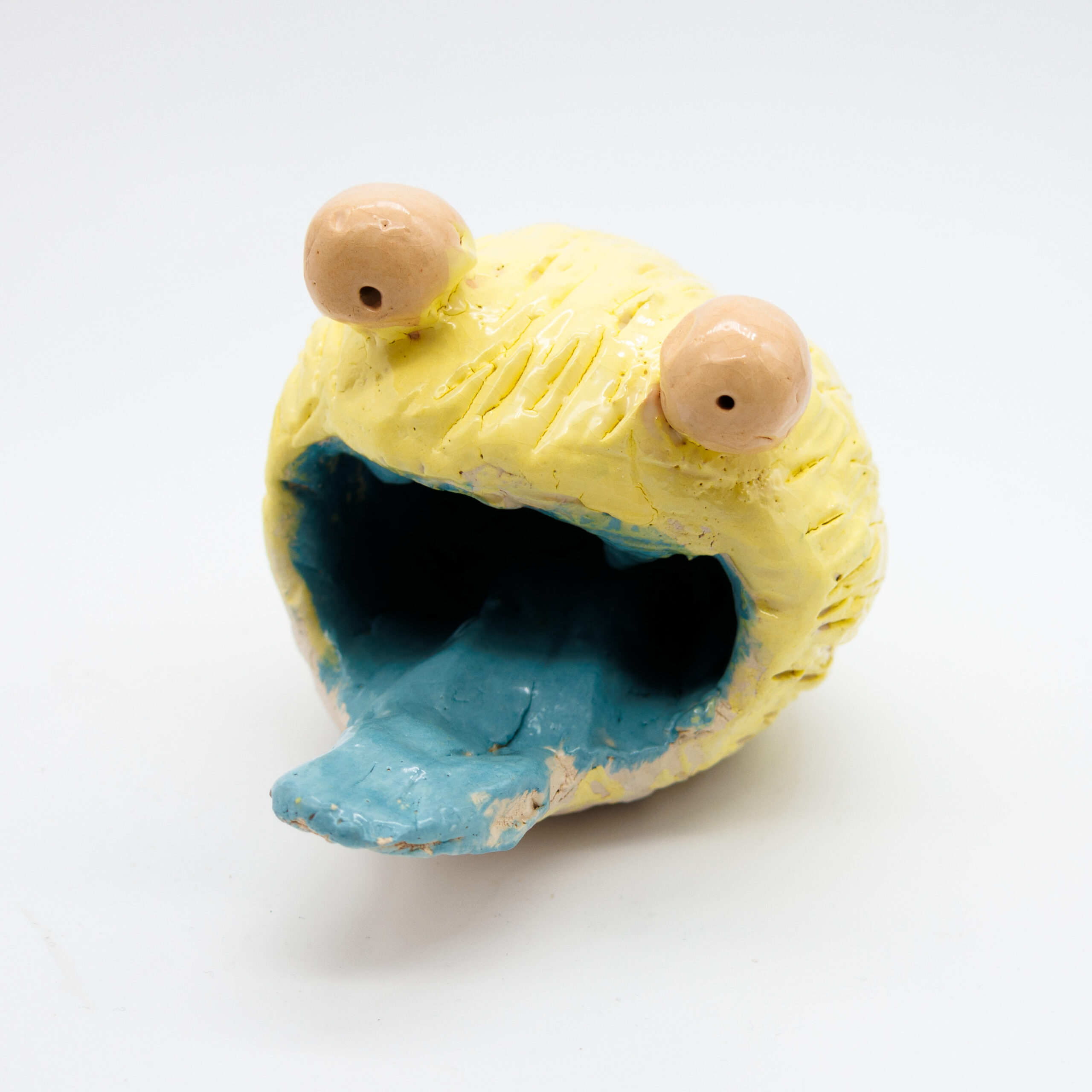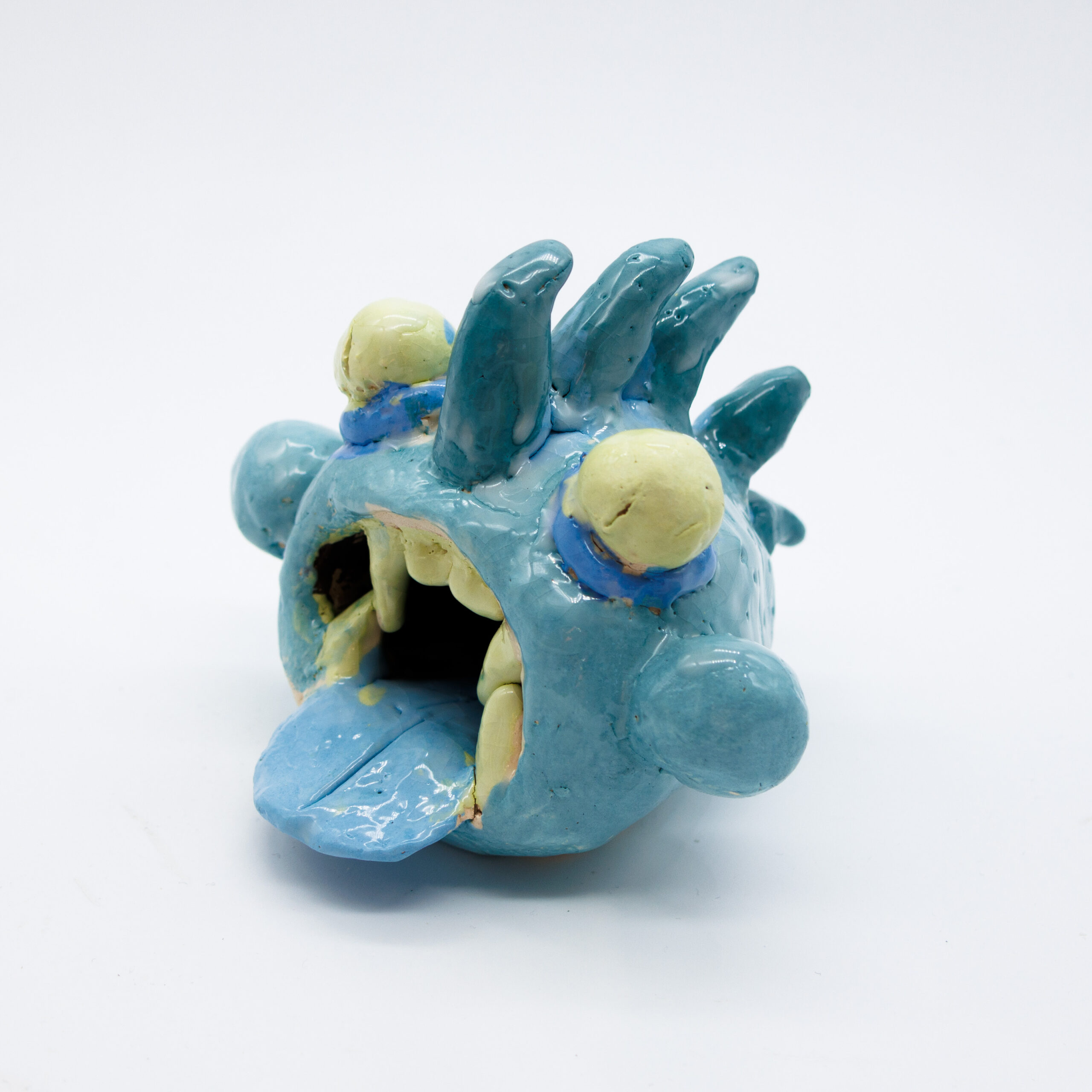- Winter 2025
Reunions and events
Snapshots from recent OTG events
2015 10 Year Reunion
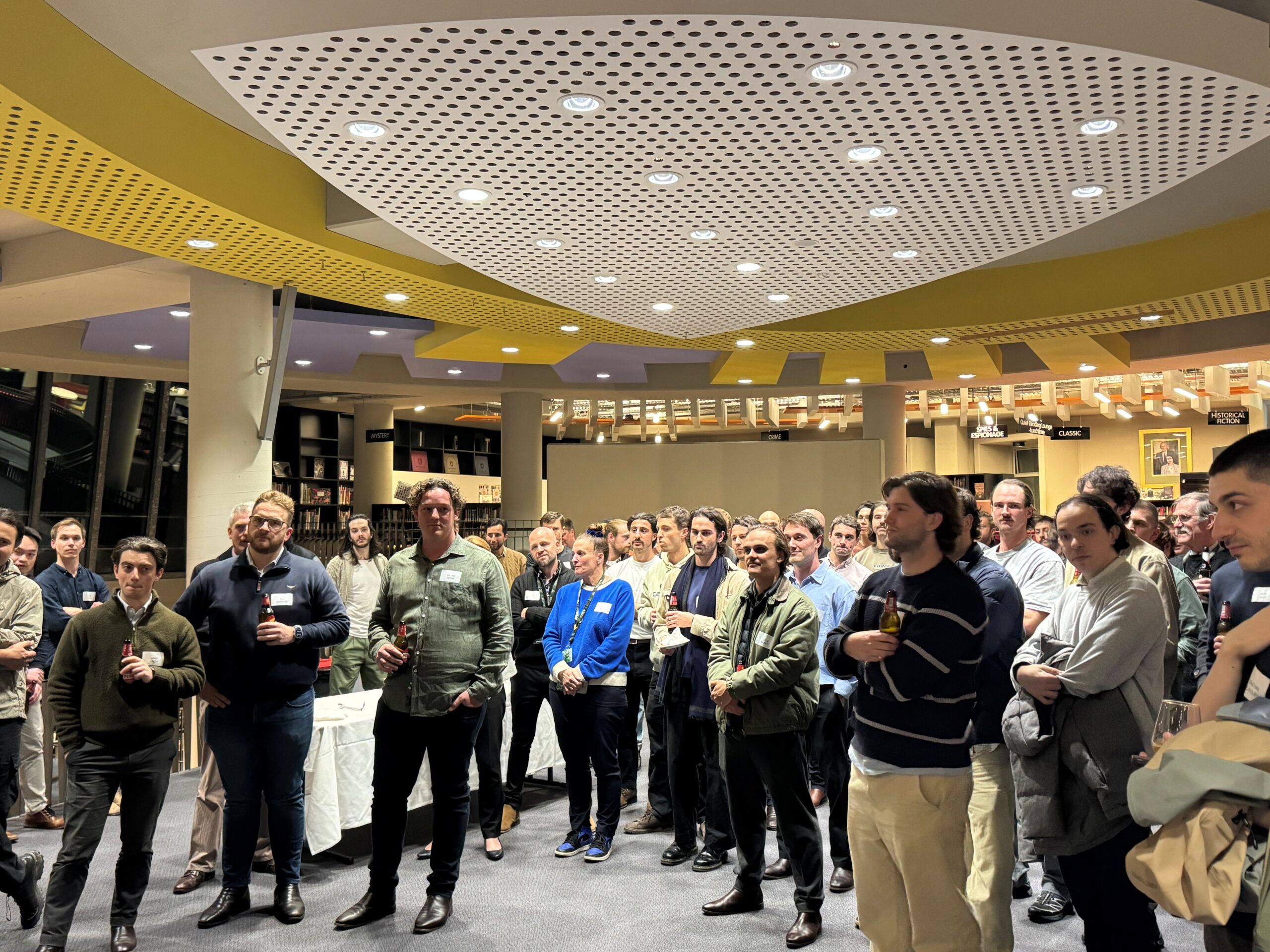
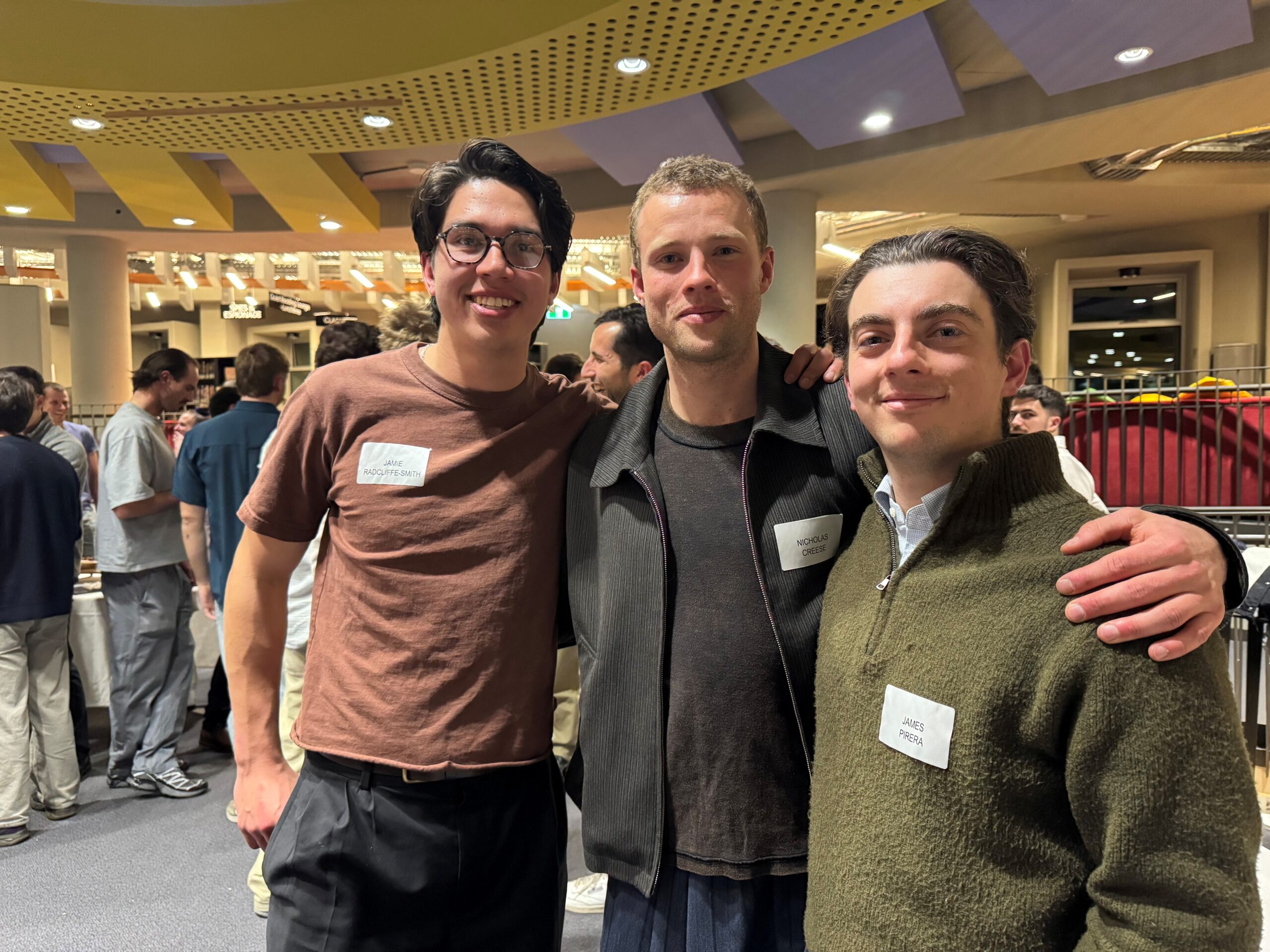
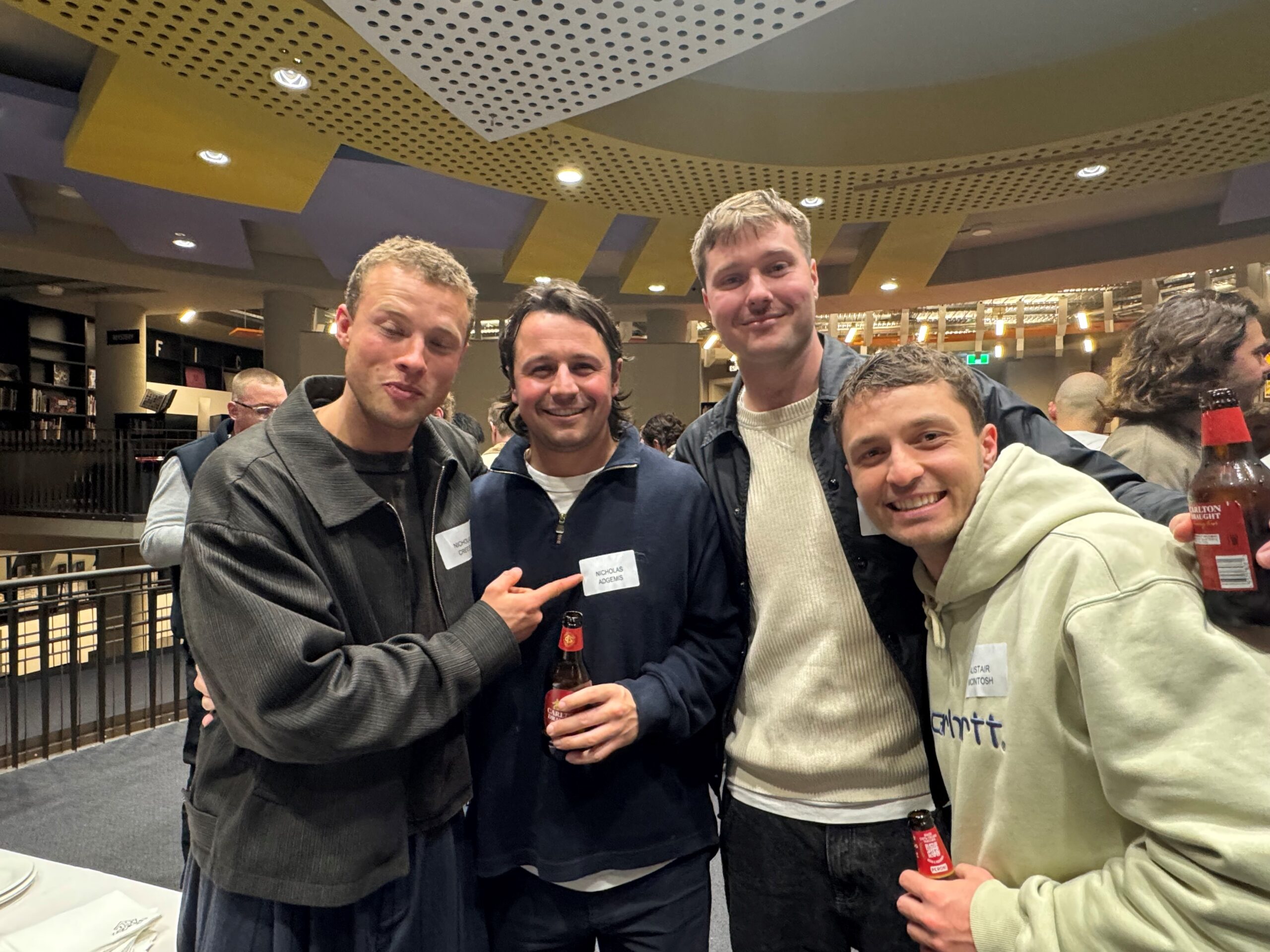
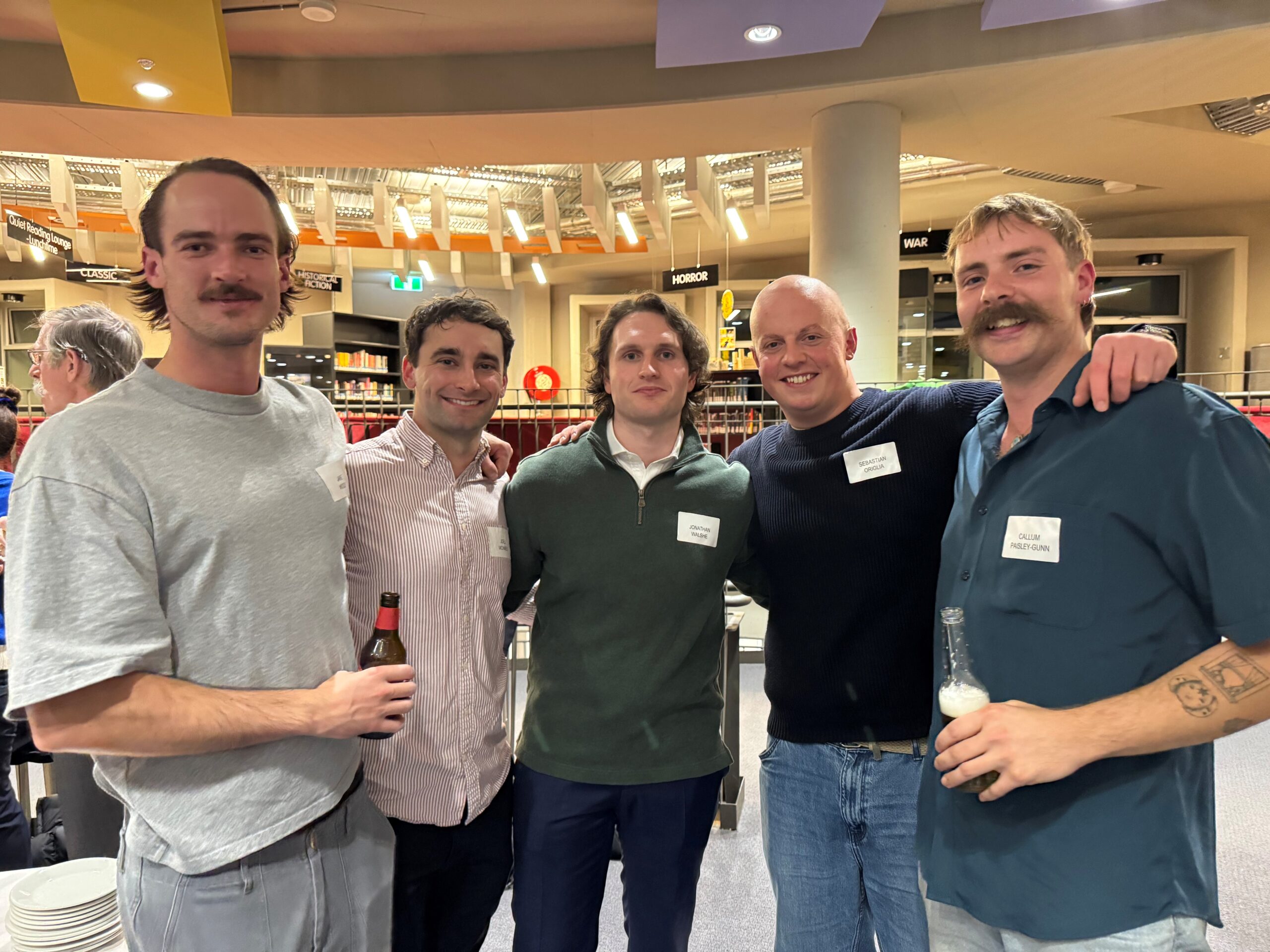

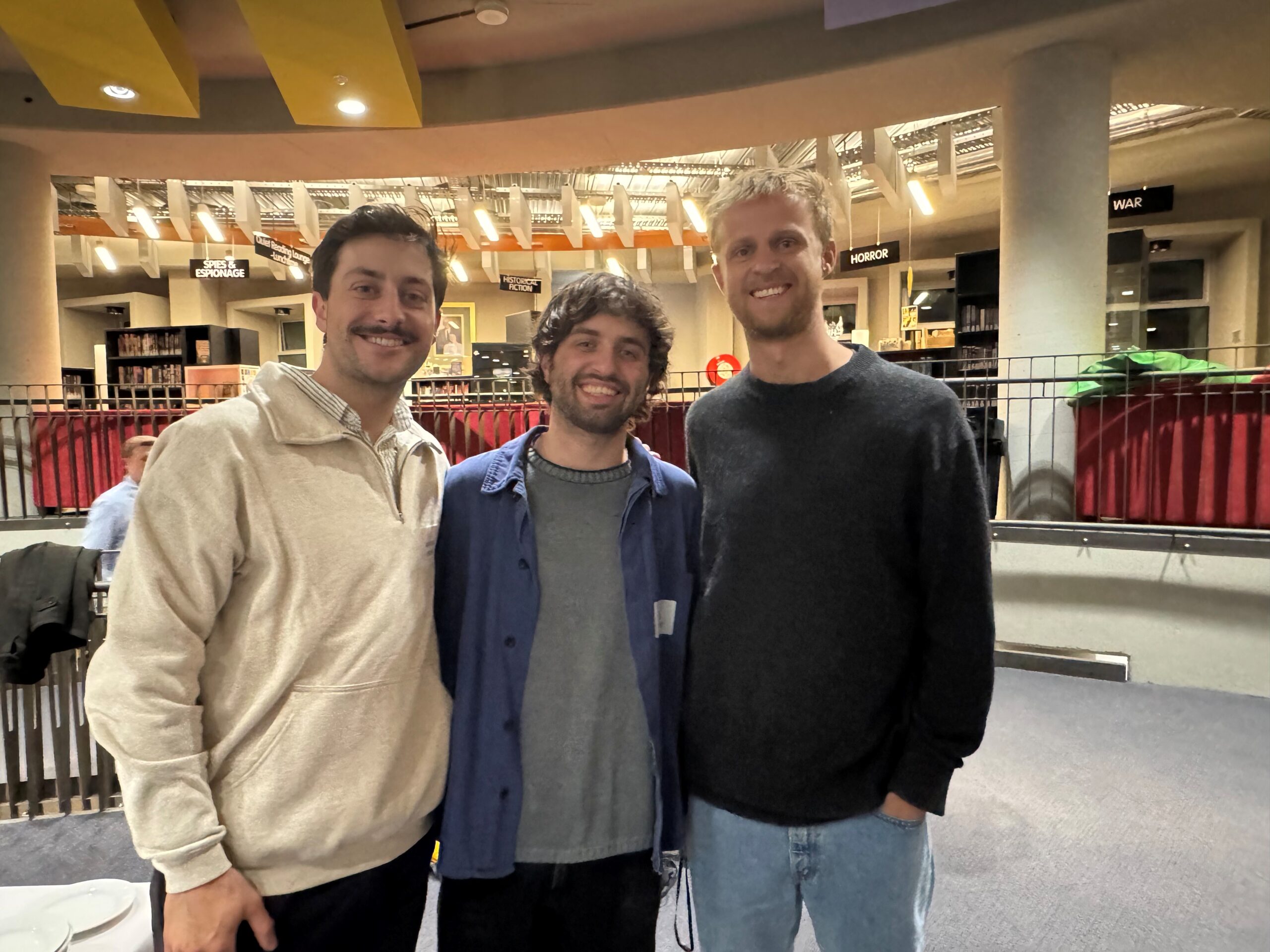
OTG Dad’s Night
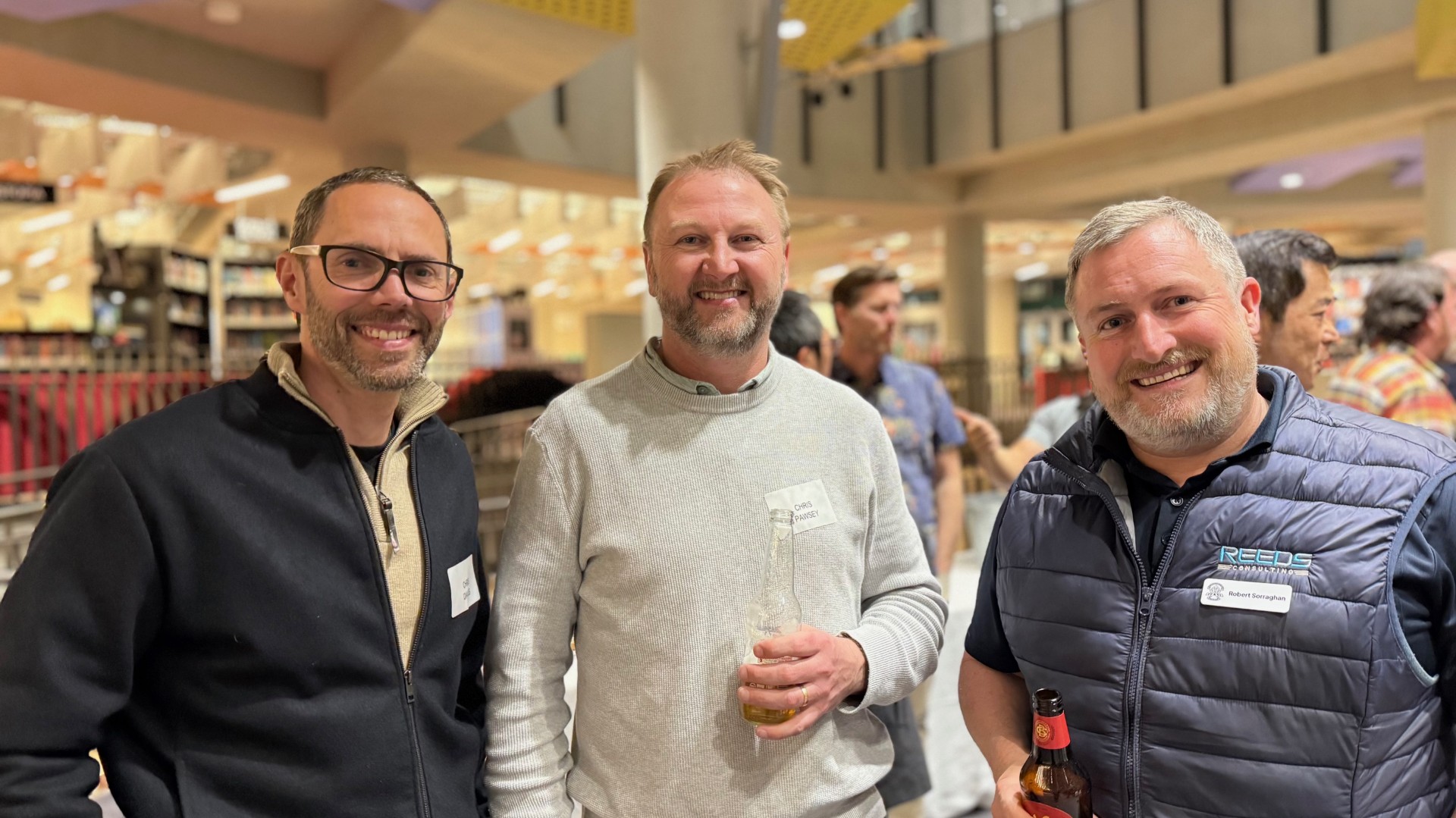
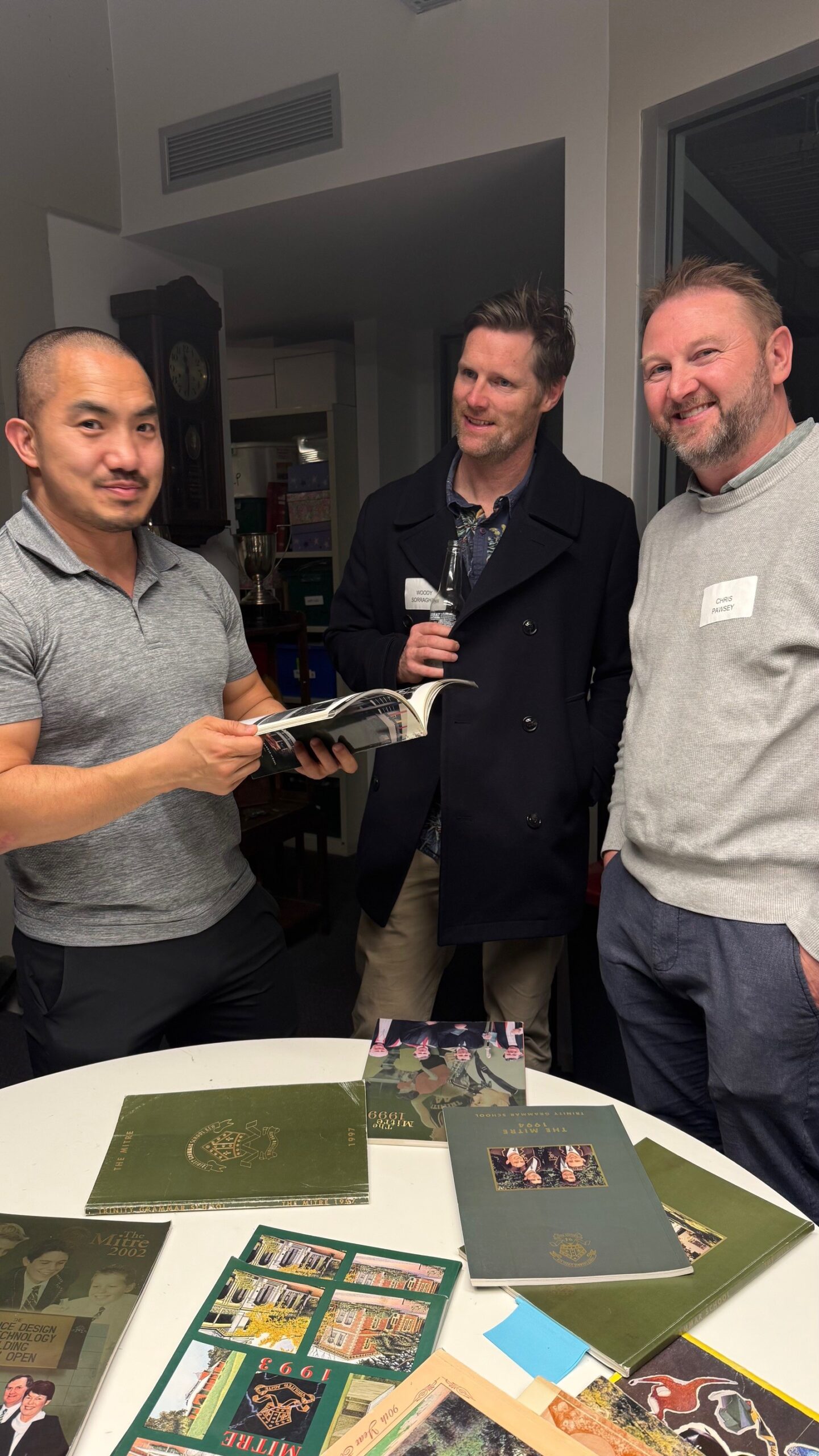
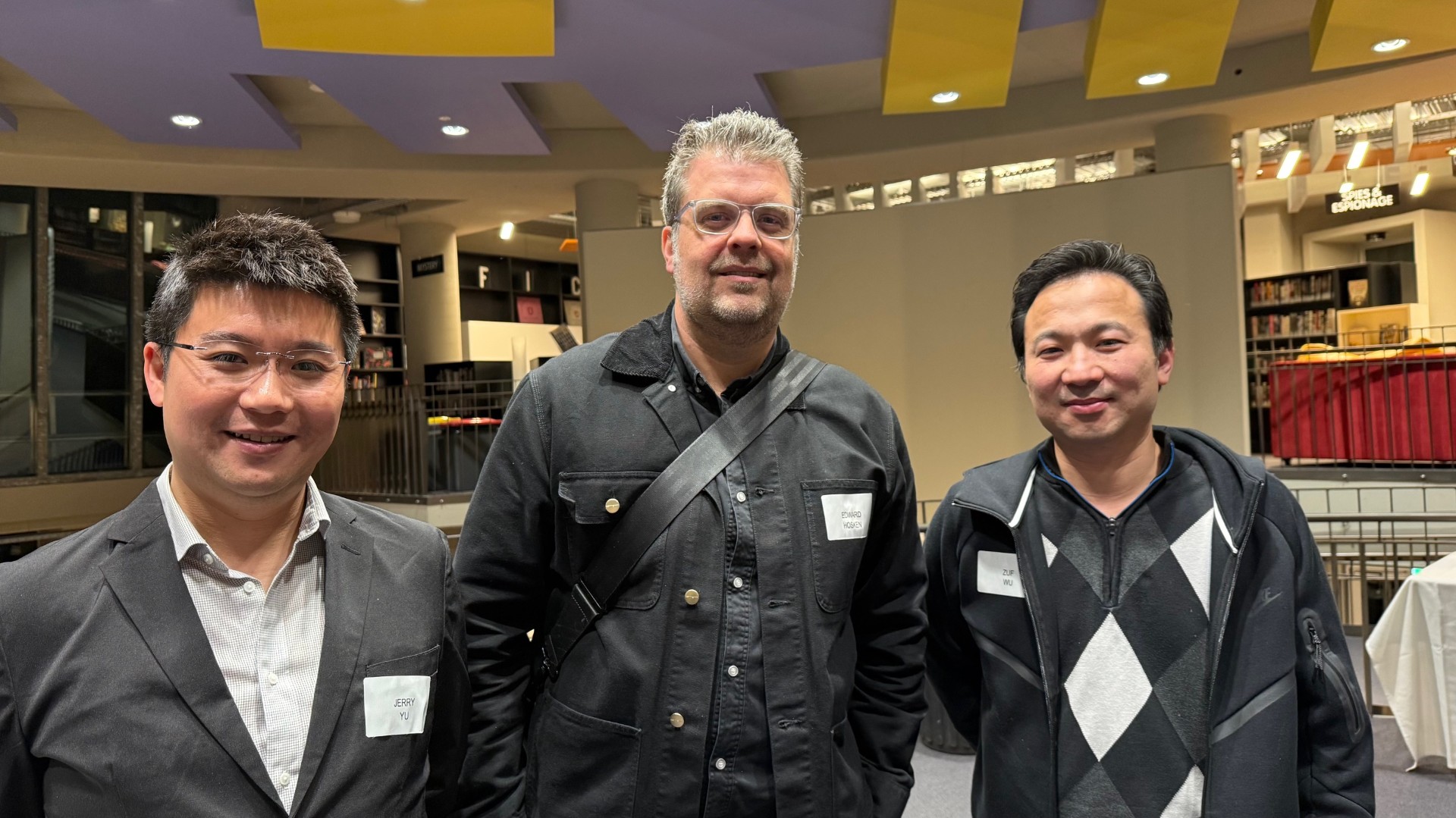

OTGA Community Breakfast
with Guest Speaker Anthony “Harry” Moffitt
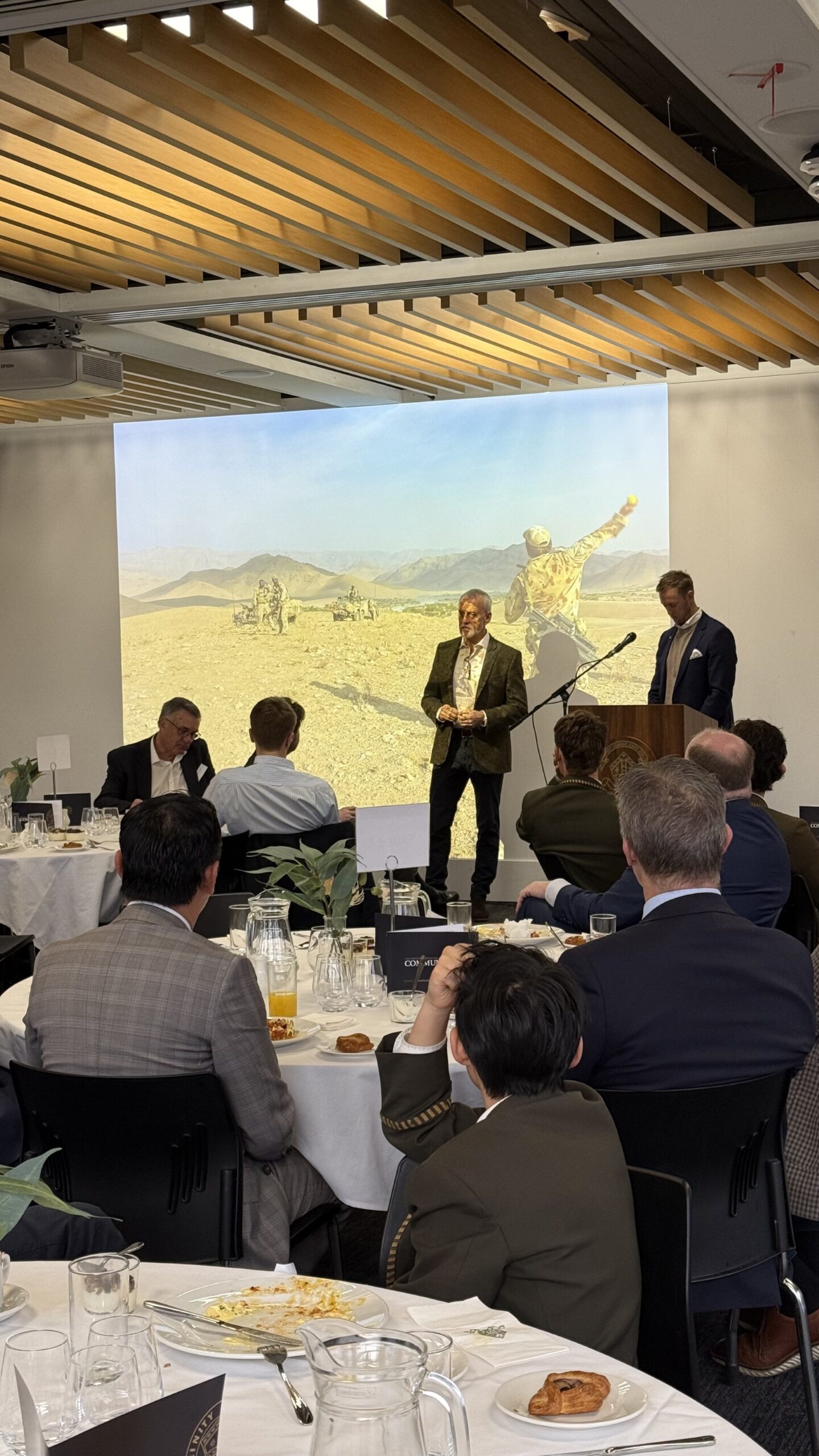
In early September, the Old Trinity Grammarians’ Association (OTGA) hosted its third OTGA Community Breakfast, bringing together a vibrant mix of OTGs, parents, students, and staff. We were honoured to welcome Anthony “Harry” Moffitt as our special guest speaker.
Harry is a SAS veteran, registered psychologist, human performance consultant, and author, whose insights captivated the audience. He shared powerful reflections on the challenges of serving in the SAS, his enduring love of cricket, and the importance of family in his life.
A heartfelt thank you to our MC Clint Hillas (OTG 1996) for guiding the morning with warmth and professionalism and to the OTGA for their continued efforts in fostering community spirit. Events like these remind us of the strength and unity within the Trinity network.
OTGA CBD Lunch
On 31 July, the OTGA CBD Lunch was held at the Australia Club. This was the first time the lunch has been held post-COVID, and it was a sellout! On the day, Principal Adrian Farrer shared insights into the Trinity Masterplan.
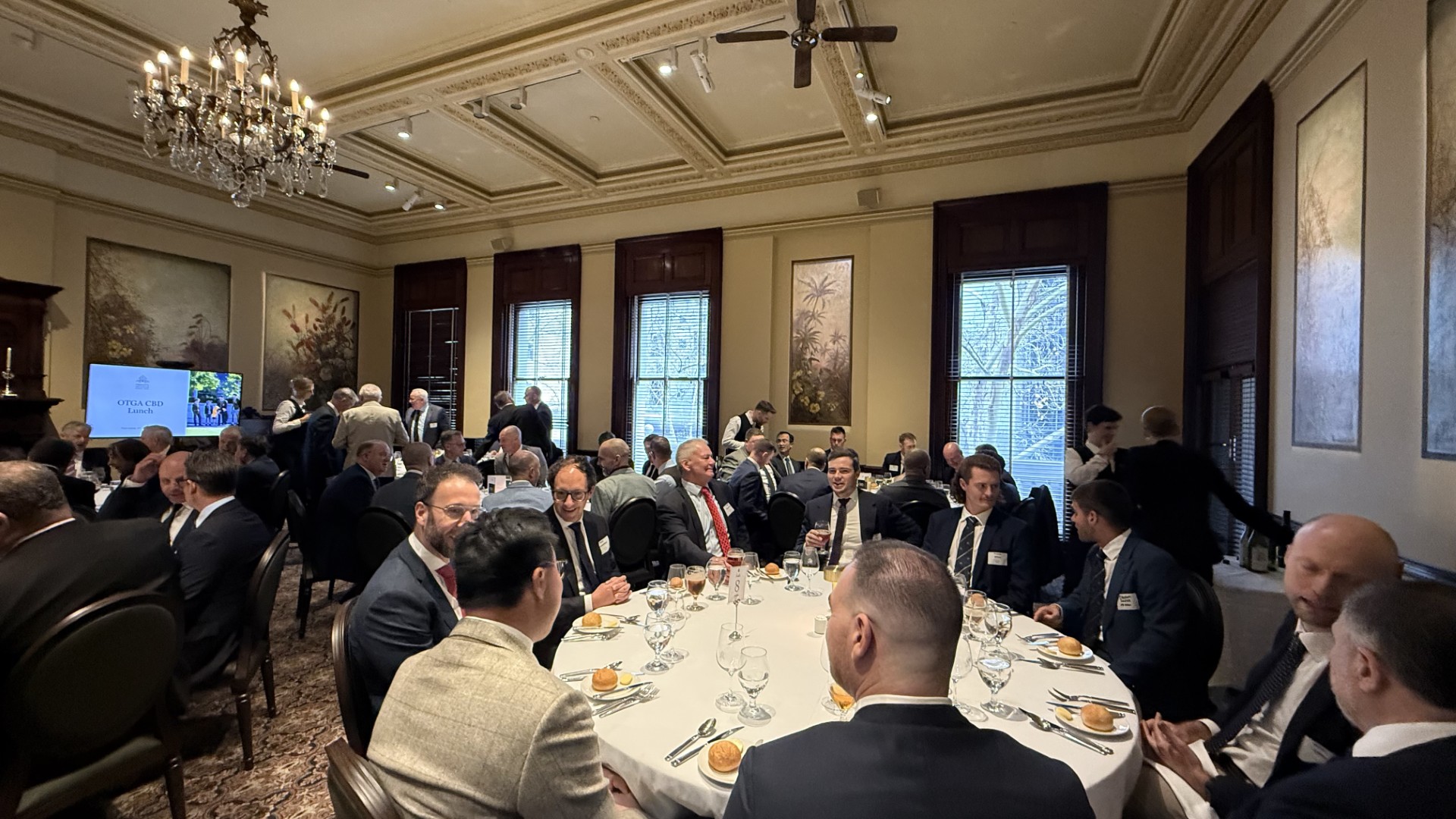
Brisbane Gathering
In early August, Adrian Farrer – Principal and Lucy Cohen – Director of Community Engagement hosted a group of Queensland based Old Trinity Grammarians.
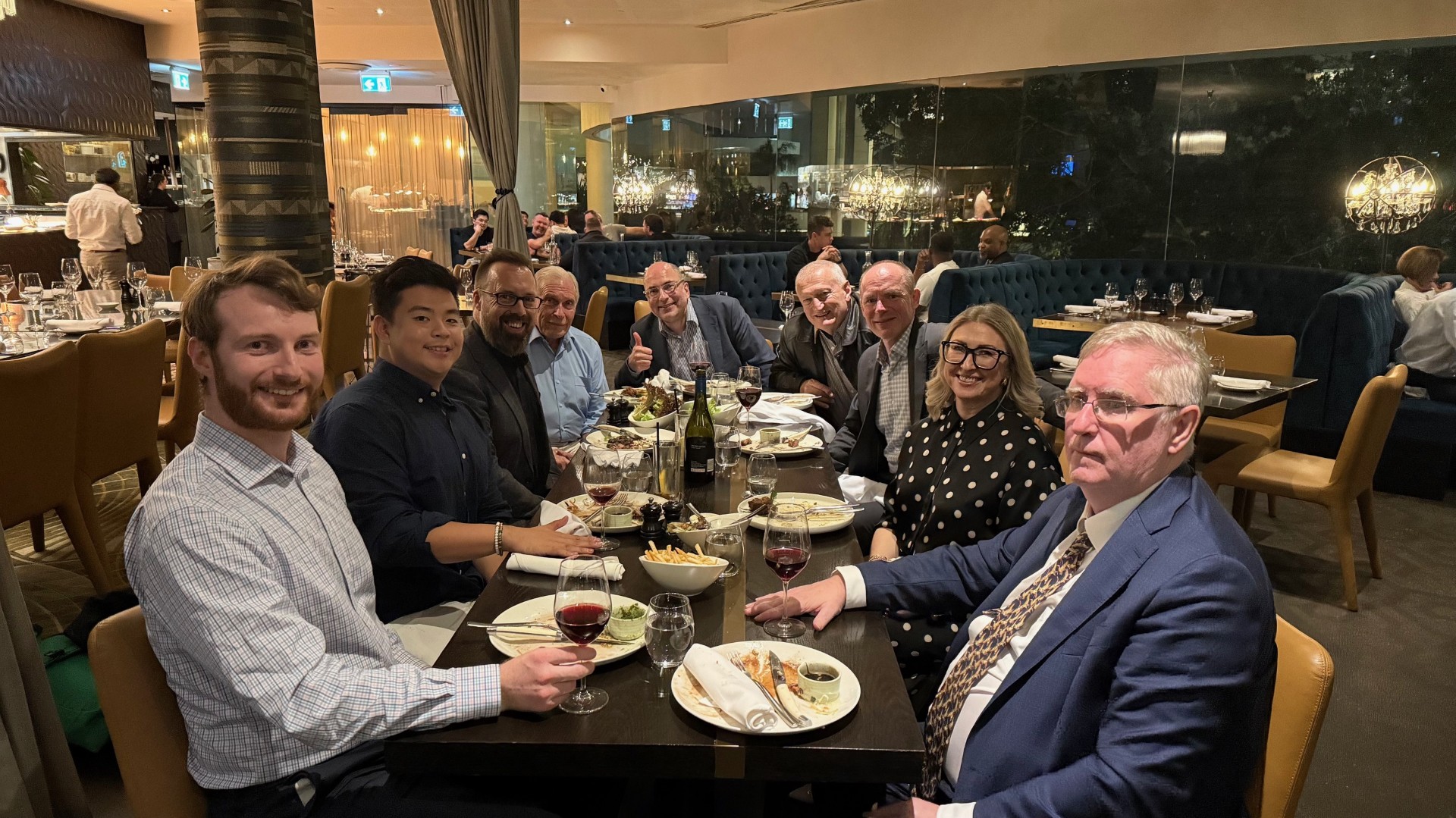
A hike from Richardson’s Beach to Wine Glass Bay

The Outdoor Education program in the Senior School is carefully structured to allow students to build upon their skills year-on-year to tackle expeditions across some of the most beautiful landscapes in Australia.
Midway through an eight-day Outdoor Education expedition in Freycinet National Park, Tasmania, we mic’d up Christian, Year 10, and asked him about some of his experiences in the program.
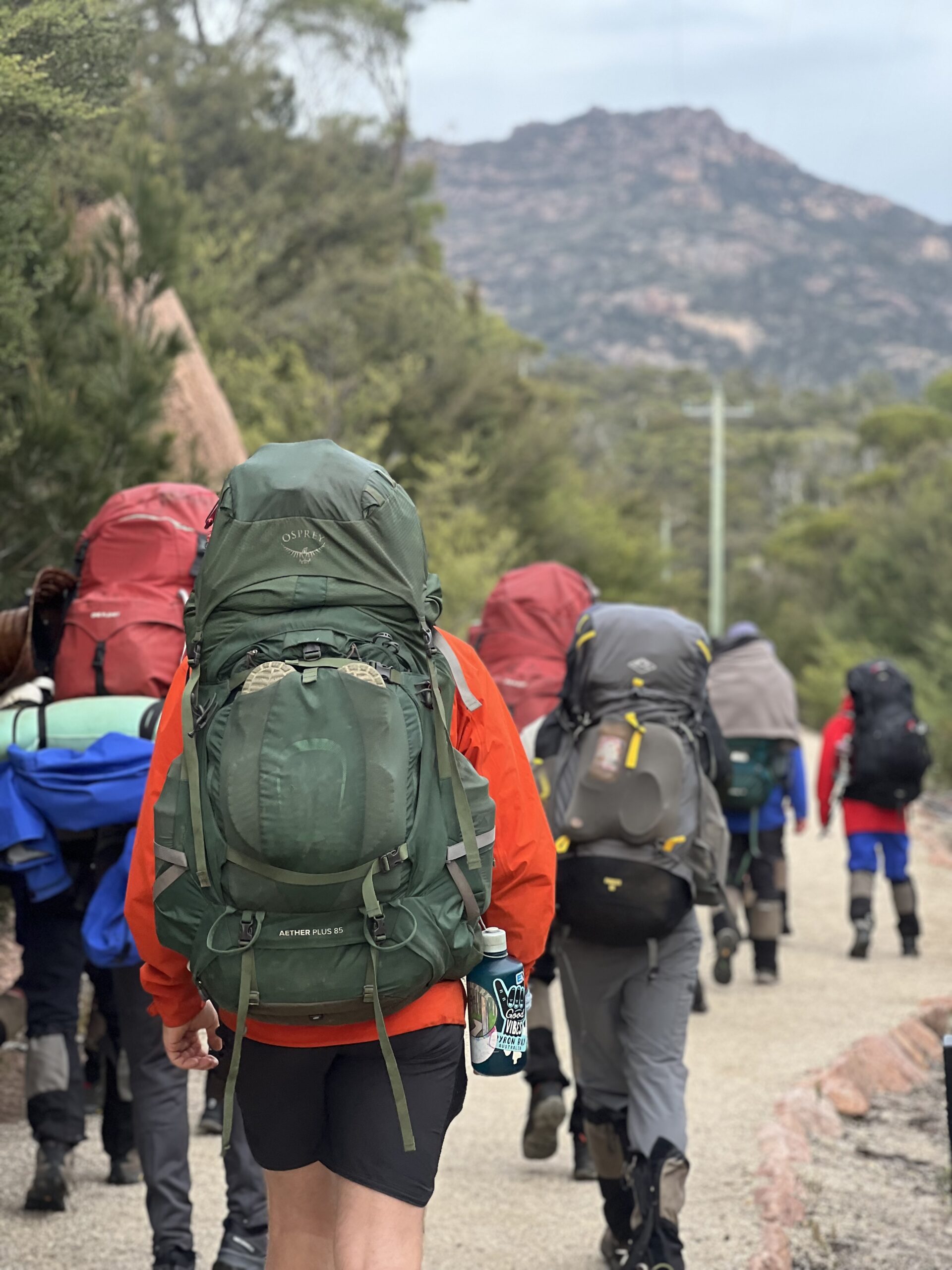
00:55:06 – 01:19:04
So, we just started a hike to Wine Glass Bay, and the time I think is around 11.00am.
We’ve actually started quite late. Later than I would have expected, but I think the hike today is quite short. Only about eight kilometers in total.
02:05:09 – 02:35:16
The prep for this expedition started about a week before, where we set out all of our gear and checked the quality and if we had enough of what we needed.
It was important that we were prepared for all the conditions that we could possibly face on the hike.
03:08:22 – 03:44:20
The Year 10 Outdoor Education program has three options. The Larapinta trail in Northern Territory includes a week-long hike, and it’s probably, in my opinion, the hardest one. There’s the Murray River option as well, which is all canoeing.
The final option, which is what I’m doing now, is the Freycinet option, which is in Tasmania, about two hours away from Hobart.
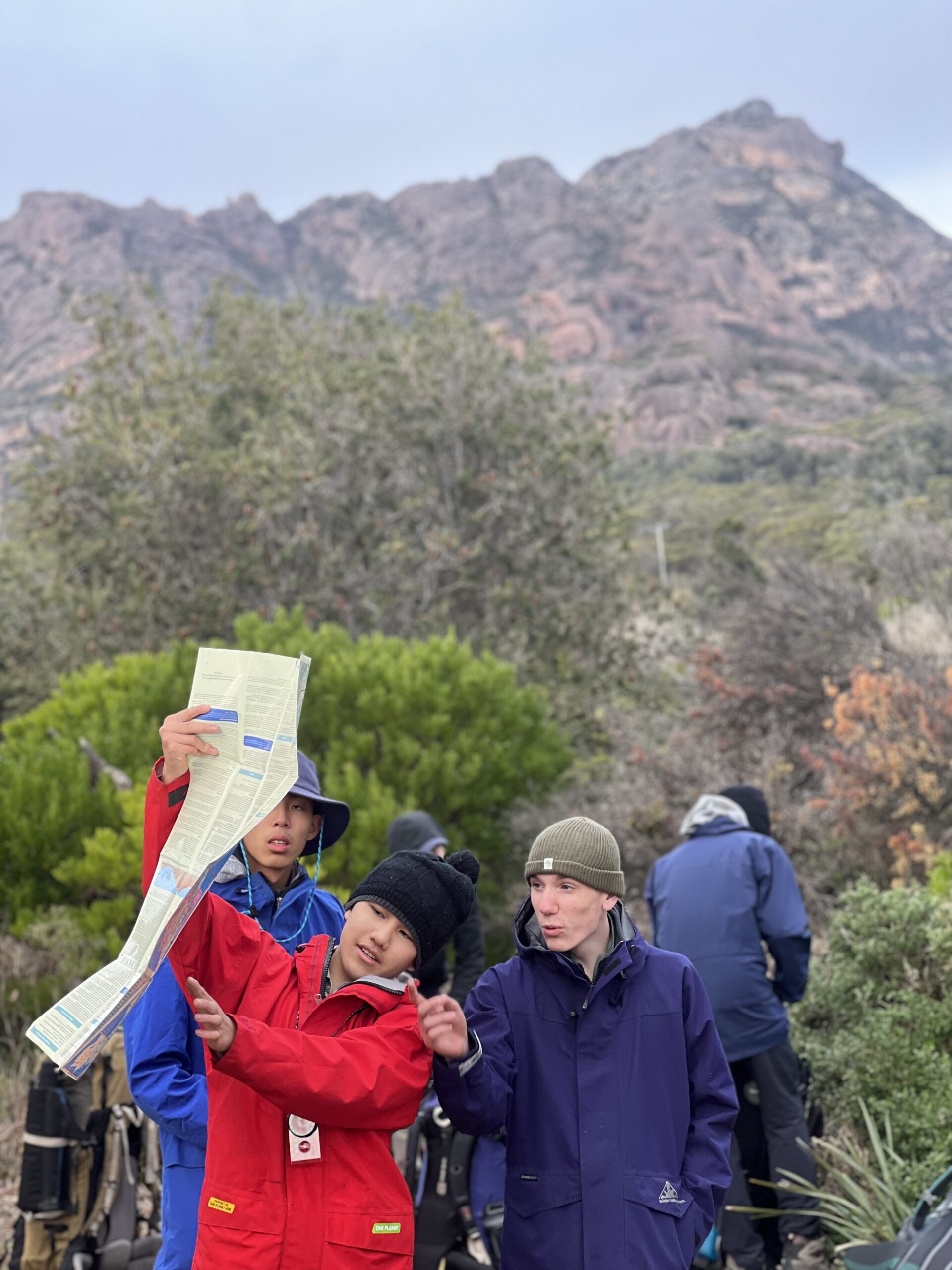
06:09:09 – 06:44:05
In the Year 7 Outdoor Education program, we learned many essential skills that were important not only to that expedition, but for later expeditions like this one.
Teamwork and individuality were really focused on.
07:50:16 – 08:24:17
I have some very good memories, actually, of the peer mentorship program. I was struggling quite a bit in the Year 8 hike, but the peer mentors helped me a lot to just push through it and gave me a lot of advice, as well as helping the team overall.
They’re very supportive. They’re very involved as well.
07:22:21 – 07:50:14
The Year 8 program was in Gippsland. It was more focused on water activities, such as sailing and kayaking, but there also was a day hike where we walked across the beach.
We had to be more involved as a team, especially because the hike was a lot more difficult.
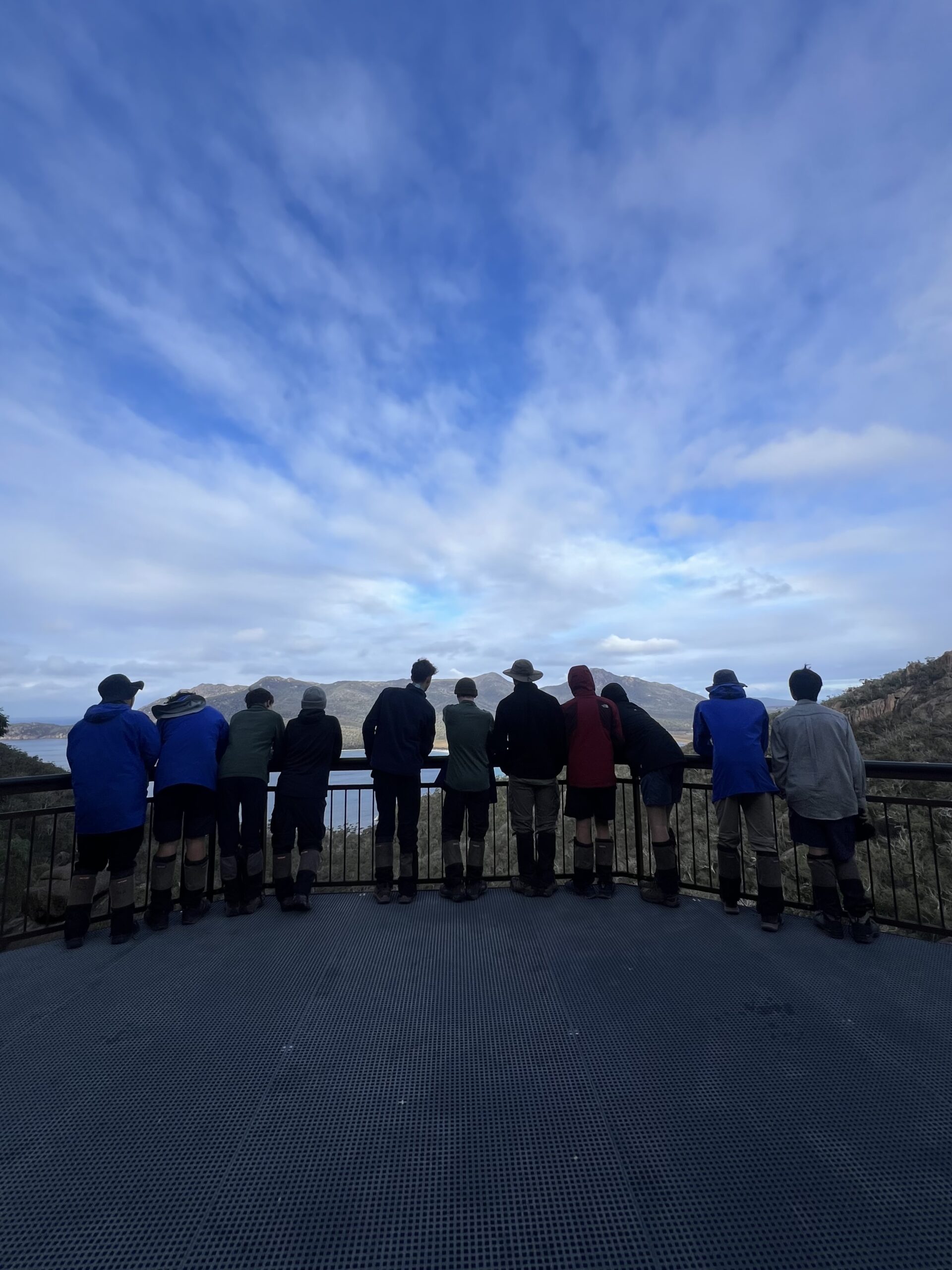
09:02:04 – 09:50:19
The Year 9 program involved a much longer hike again.
It was two or three days, meaning there was a bigger emphasis on taking initiative and being active and ready to help the people that needed it.
11:14:06 – 11:49:13
When I think of going outdoors, I initially feel like I’m going to miss my devices, but in reality, I barely ever think about my phone or my computer.
I think that just shows how fulfilling and how fun really the Outdoor Education program is.
12:19:01 – 12:49:15
You find that you build stronger friendships by going on these trips.
It kind of exposes another side to your peers that you wouldn’t usually see at school or on the field.
It brings out the kind of more, soft side, because teamwork and being empathetic are part of the skills that are required.
Student Insider
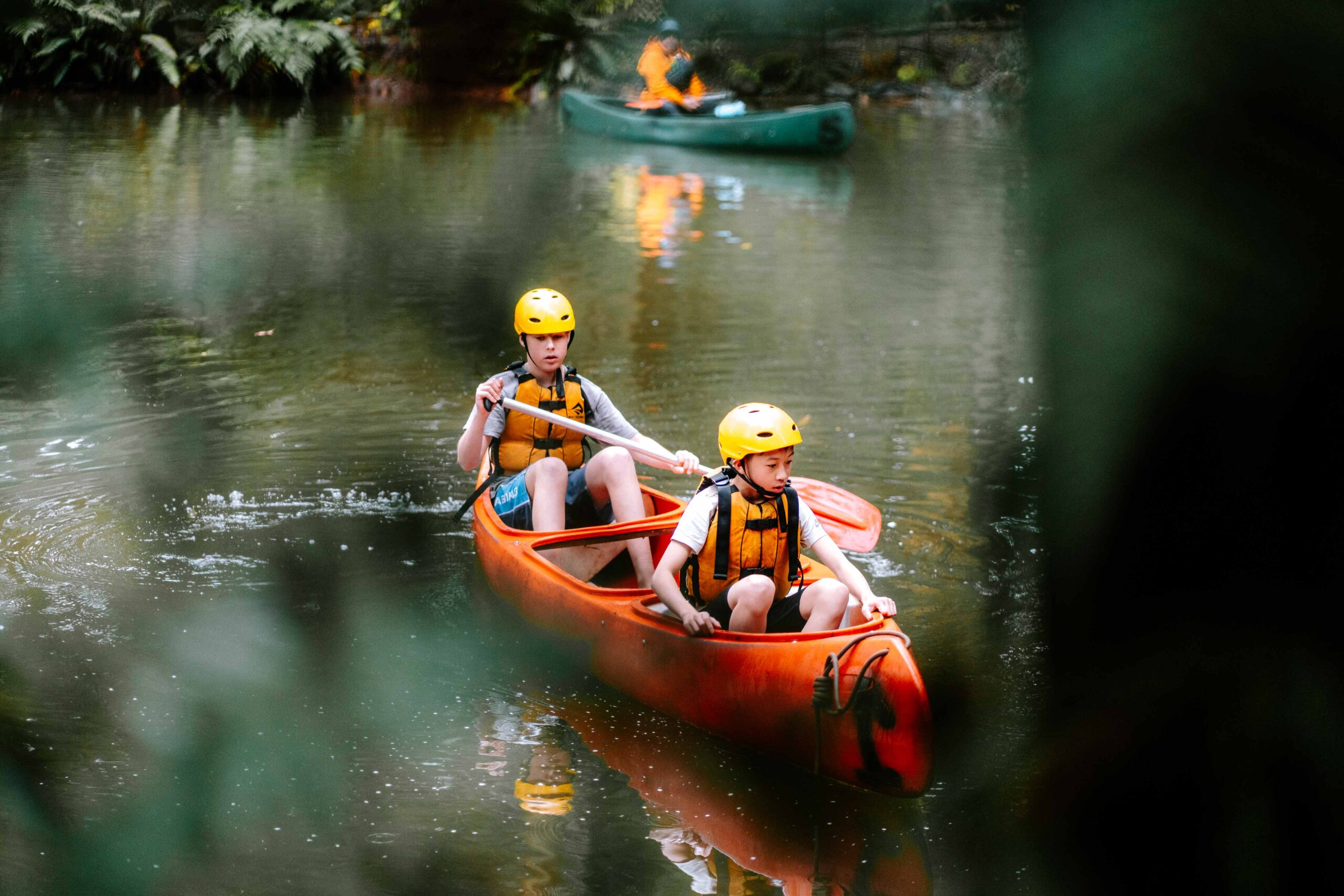
The holiday hike
– JB Seo, Year 9 student
The holidays are always a period for chilling at home and playing video games as much as you want. Unless of course, you were among the 15 Year 8 and Year 9 boys who went on the Great Ocean Walk.
Over the course of three days, we walked along the coasts near Apollo Bay starting our first day from Otway, blessed with seemingly good weather. We powered through to Castle Cove, where we then headed to the Cape Otway Lighthouse, otherwise known as the Beacon of Hope. This time, we were blasted by winds going at 50 km/h and rain that blew sideways.

On the last day, the weather let up a bit, giving us a chance to go see some big rocks (otherwise known as the Twelve Apostles). The trip came to a full circle on the way back, when we stopped by a place called Frying Nemo and bought ourselves some well-deserved chips. (Be sure to visit them if you’re ever on the Great Ocean Road).
The trip is no doubt a valuable memory for all that went. You may be wondering, “What could be so good about being blasted by rain all day?” To be honest, I don’t know. But I’d definitely do it again if I got the chance.
Feature image: Year 8 Learning Journeys (photo captured by Chris Clayton, OTG 2018)
Personal passions inspire meaningful contributions for Year 6 leaders
Nicole Glassenbury and Jacinta Kennedy, Year 6 classroom teachers
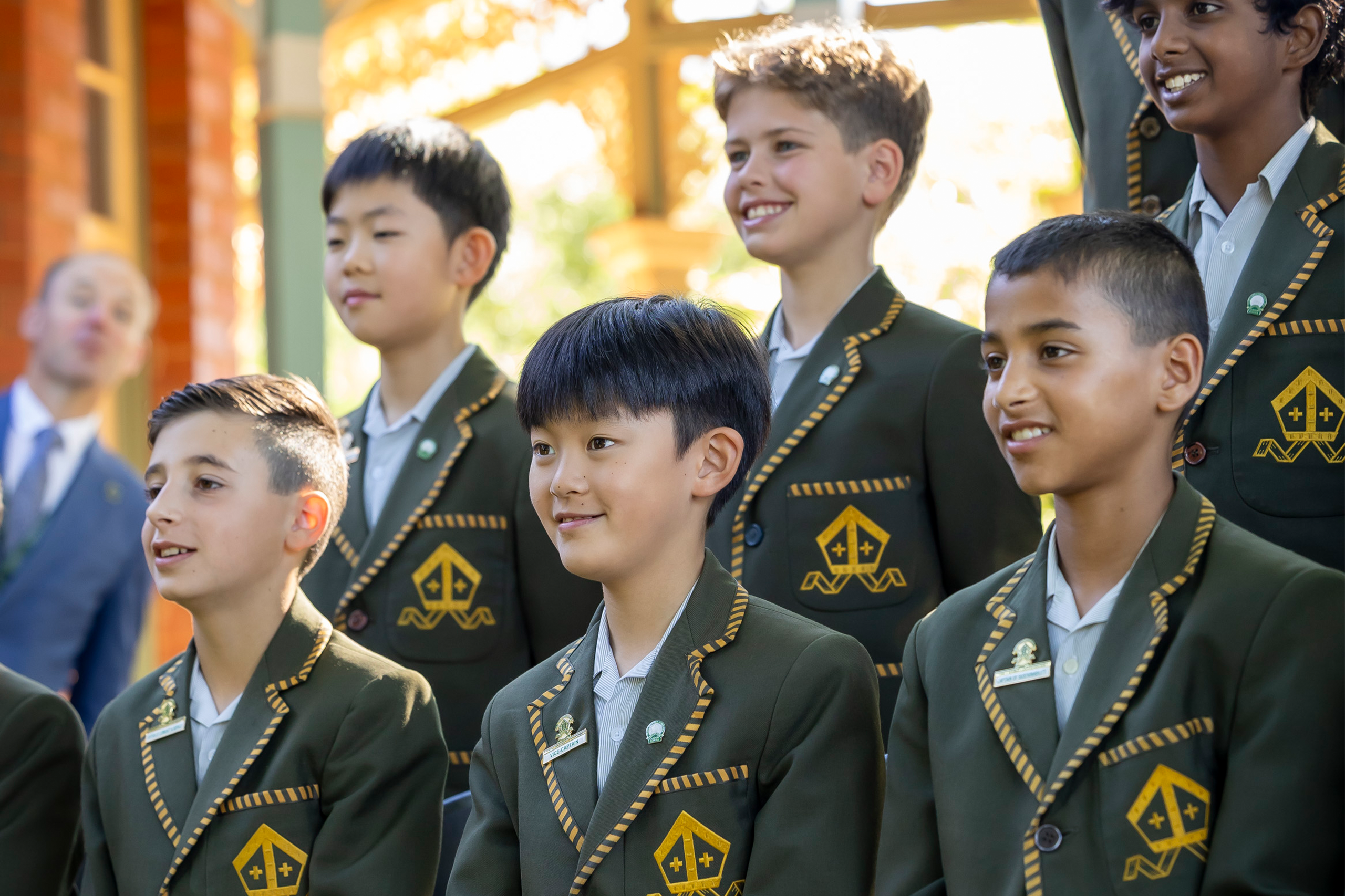
Leadership is not just about taking charge; it’s about serving others, building community, and making school a better place for everyone.
The Ambassador program, which is part of the Year 6s’ inquiry into Who We Are, sees students explore what effective leadership looks like and how their personal passions can inspire meaningful contributions.
After joining their chosen Ambassador group (Community Service, Sustainability, Arts, Music, Drama, House Sport or House Academics), students brainstorm initiatives that align with their interests and benefit the school. Some ideas are inspired by teacher suggestions, while others are entirely student driven, reflecting their creativity and commitment to making a difference.
Examples of student-led initiatives have included:
• Organising a Year 3 dodgeball tournament to promote fair play
• Presenting a lesson on growing pea plants with Year 1 students
• Creating props for drama performances
• Reading to Prep and Year 1 students
• Hosting a Mini House Athletics Afternoon for Year 2

Year 6 students Boyan, Colin, Harrison and Toby joined the Community Service Ambassador group, and together decided to serve their school community by meeting at the ELC gates each morning for one week, to greet and support their youngest community members with the transition from home into their school day.
What gave you the idea to initiate this program?
Mrs Wescott proposed the idea, and we eagerly embraced the opportunity. We saw it as a meaningful way to demonstrate leadership by serving our community and helping the youngest students and their families feel truly welcomed at our school. Helping the school community isn’t just for fun; it’s for service.
What was the process you had to go through to start the program?
To start the program, we first coordinated with the Early Learning Centre to identify suitable days and times that worked for both their schedule and ours. This involved careful planning to ensure minimal disruption and maximum engagement. We then started communication with the ELC teachers to understand their expectations, and to collaboratively design an initiative that would be good for their students.
What does the initiative involve?
In the morning at 8:45am, two of us would welcome families and students at the front gate, two of us at the back gate. We would welcome families in two languages, English and Mandarin, to ensure all students and families felt welcomed. We went every day for a week to get to know the children and build connections with them all.
How has the program been going?
Our aim was to make the ELC students feel more comfortable and confident in coming to school. After repeating this over several days we found that the students started to get to know us and felt more confident in talking with others.
Why is this program important to you?
It has been important to us as we have improved in our own leadership skills of communication by learning how to greet people. On the first day I was quite nervous, however over the days I got to know some of the younger students in our school, who I will now know for years to come. I hope they will remember us. Any chance to help the school, is a chance any Trinity student will take.
Deep tradition meets growth and innovation
Lucy Cohen, Director of Community Engagement

Trinity Grammar School, Kew has long been recognised for its aspiration, authenticity and deep-rooted values. Over the years, we have evolved in thoughtful and deliberate ways, balancing tradition with innovation, to ensure Trinity students receive an education that is both timeless and forward-thinking.
As we look to the horizon, our responsibility is clear: to build on this foundation and ensure we remain not only relevant, but leading. In a rapidly changing educational landscape, remaining competitive requires more than excellence in the classroom. It demands visionary thinking, contemporary facilities, and deep investment in student experience and opportunity.

From left to right: Lucy Cohen, Director of Community Engagement, Adrian Farrer, Principal, James Brown (OTG 1992), Chair of Trinity Foundation, Ash Butler, Chair of School Council.
In recent months, we have entered the quiet phase of a capital campaign – a period of careful planning, consultation, and early engagement with key supporters. This phase has enabled us to refine our vision, secure early commitments, and lay the groundwork for the launch of the campaign for the Bulleen Pavilion. These efforts have been guided and championed by a strong alliance between the School Council, the newly established Trinity Foundation and school leadership – a united commitment to the future success of our students and our institution.
Now, as we step into the next phase of this journey, we are proud to introduce the first exciting development in the school’s Masterplan.
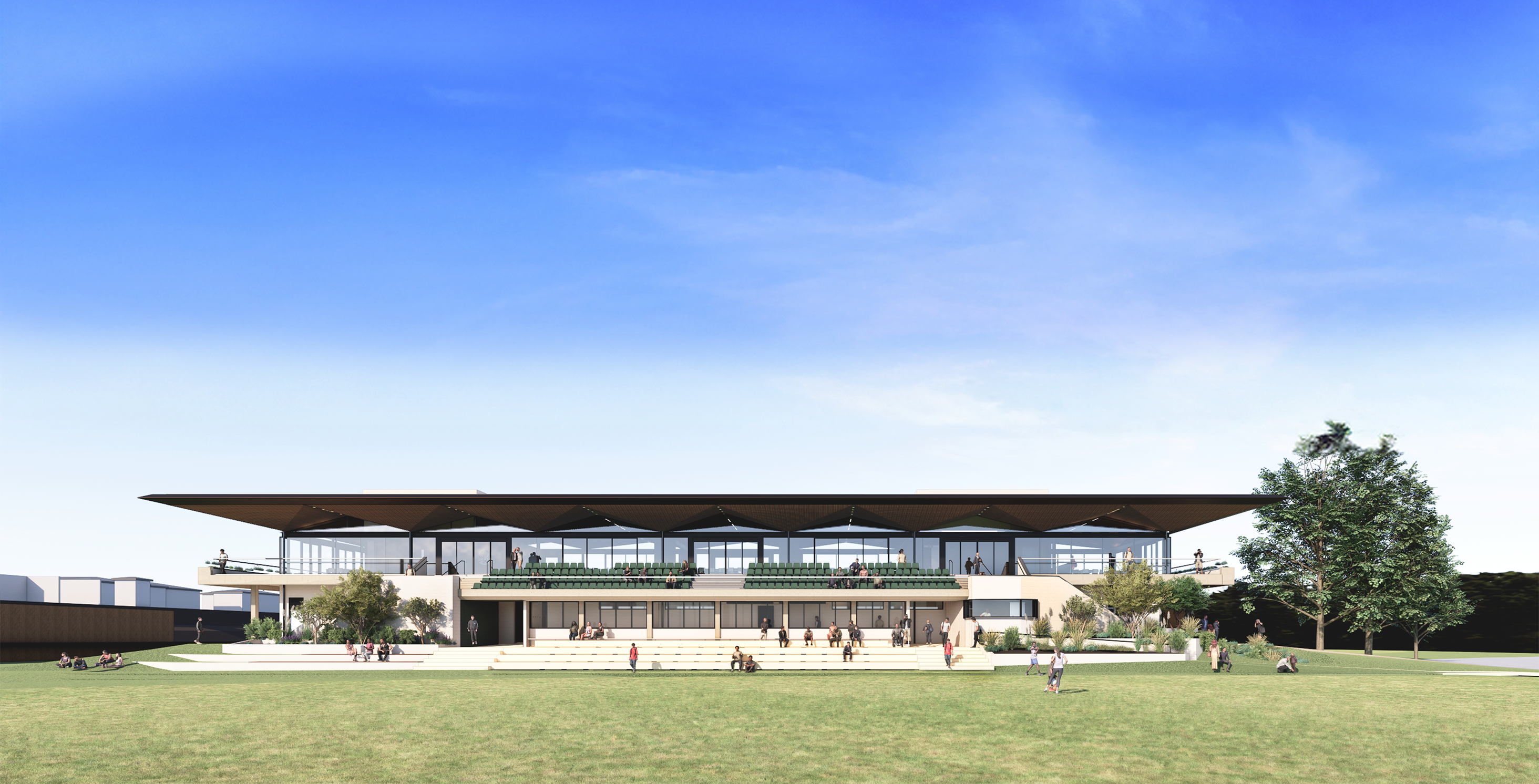
Trinity Together
The Bulleen Pavilion
Our focus for a connected future
As we look to the future of Trinity Grammar School, Kew a number of major initiatives are taking shape – projects that will strengthen our community, expand our capabilities and deepen the experiences of every student. Leading the way is The Bulleen Pavilion at the Marles Playing Fields – the first in a series of key developments that will shape the next chapter of our school’s story.
The Pavilion will replace the much-loved Just Pavilion and Cohen Room, spaces that have served us well across decades of school life. But as our community evolves, so must our infrastructure. This new development has been carefully envisioned to reflect not only the breadth and aspirations of Trinity today, but also our belief in building strong, connected foundations for the generations ahead. The Pavilion will become a central hub, connecting sport, community and culture, while supporting future generations of Trinity students.
In its new form, The Bulleen Pavilion will offer improved functionality for sporting events, inter-school fixtures and visiting teams, while also supporting OTG events, school-wide gatherings, and partnerships with external organisations. This will be a place for meaningful engagement, a setting where memories are made and where community life thrives.
This is a project not only about physical infrastructure but about investing in a shared sense of belonging. The Pavilion will serve as a daily reminder of the importance of community. A place where friendships are built, achievements are celebrated and memories are made. The Pavilion will also function as a purposeful learning environment fostering leadership, resilience and connection through experiences that complement the school’s academic program. It will also be a springboard for being our best selves, ensuring students and staff have the facilities they need to thrive.
Our vision for the Pavilion is ambitious, but it is grounded in our belief that exceptional environments inspire exceptional outcomes. The impact of this new space will be immediate and long-lasting, enriching the daily experience of students, families and visitors alike.
Importantly, The Bulleen Pavilion sets the stage for what comes next. Following its completion, attention will turn to the development of the Year 9 Village, a transformative environment purpose built to this pivotal stage of student growth. Together, these two projects mark a sequential investment in both community connection and educational innovation.
The success of this first project will shape our momentum. As such, we are calling on the Trinity community to help bring The Bulleen Pavilion to life. Just as we are known for our strong values and deep community connections, so too must we be known for our vision. The Bulleen Pavilion is that vision made real — a new home for our school’s heart and spirit.

Frequently Asked Questions
1. Why does the School feel this project is important?
In 2024, the school undertook a Feasibility Study which helped to determine that this project was important to the Community. The pavilion at the Marles Playing Fields is part of the school’s Masterplan and no longer meets the needs of our current and future students. We must ensure our facilities are contemporary, safe and can support all stakeholder requirements and our strategic intent.
2. Why aren’t school fees enough to pay for the new pavilion?
School fees are allocated toward the day-to-day operation and educational needs of the School. Capital projects like this require a one-time, significant investment beyond the annual budget. Fundraising ensures we can build this facility without compromising the quality of our existing programs.
3. Will I be asked to contribute?
The campaign is about helping our community gain an in-depth understanding about the project and having conversations about what families and individuals can do to support. It will take some months for all these conversations to take place and so some amongst us may not be approached about the campaign for some time. Others of us will be involved more quickly. As the campaign progresses, there will be an opportunity for everyone to be involved at a level that is personally meaningful.
4. What is the timeline for construction and completion?
Pending successful fundraising, we aim to begin construction at the end of September 2025 with completion projected for October 2026. We look forward to providing regular updates as the program and timelines are confirmed.
5. How can I donate? Are donations tax-deductible?
Donations can be made by credit card or bank transfer or through a pledge over time. All donations are tax-deductible to the full extent allowed by Australian Tax law. Donors will receive acknowledgment letters and receipts for tax purposes. Please contact Lucy Cohen or Hayley Galloway from the Community Engagement Office if you are interested in supporting this project.
6. How will construction impact facility access or programs?
We are working with the school’s architects, engineers and builders to ensure minimal disruption to people and programs. Some modifications may be needed during construction, and planning has been underway for some time to source convenient and equitable alternative spaces. All core programs will continue and communication will be provided in advance of any changes.
7. Why is there a need to fundraise given the amount of funding provided to the School by the North East Link Project (NELP)?
The school has in the past been the recipient of some funding from NELP to enable the replacement of facilities such as the Tennis Courts on the western boundary which was affected as a result of the NELP occupation of a significant portion of the Marles Playing Fields.
The total project cost is budgeted at $20M. While the School will contribute a significant portion, we’ll also be inviting the wider School community to partner with us by making a combined contribution in excess of $2M. The more our community can contribute, the more capacity the School will retain to deliver future projects.
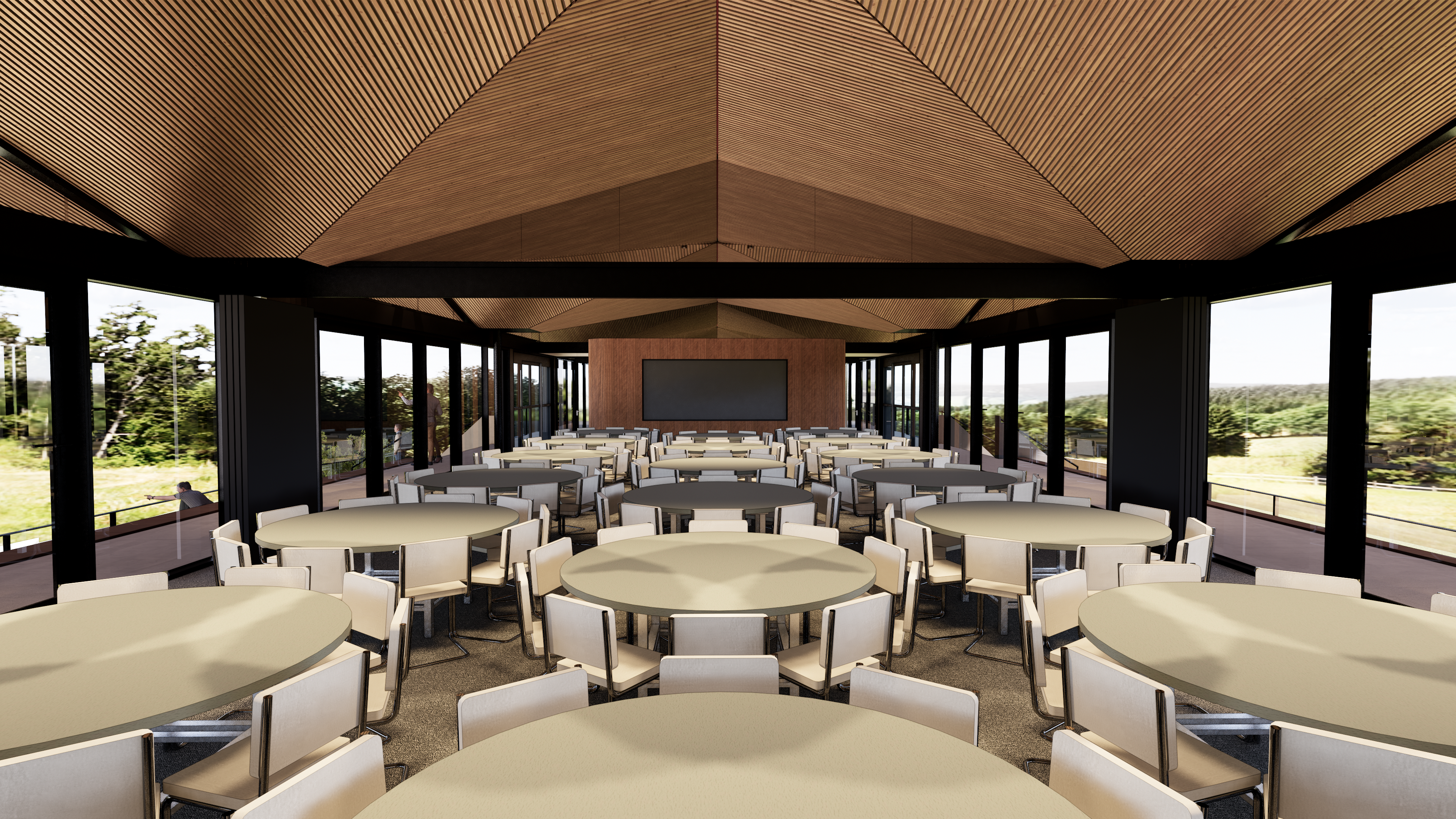
Snapshots of school life
School happenings across Term 2

Mini monsters
As part of their Art class, Year 7s were tasked with creating ceramic mini monsters. They utilised a number of ceramic shaping and joining techniques, including making a pinch pot form, joining features including teeth and spikes by scoring and applying slip and applying glazes at the end to define features using colour. Many of the students’ responses were very highly personalised and unique!
Fergus and his purpose

Alex
Year 5 student
A poem written about Trinity’s therapy dog, Fergus.
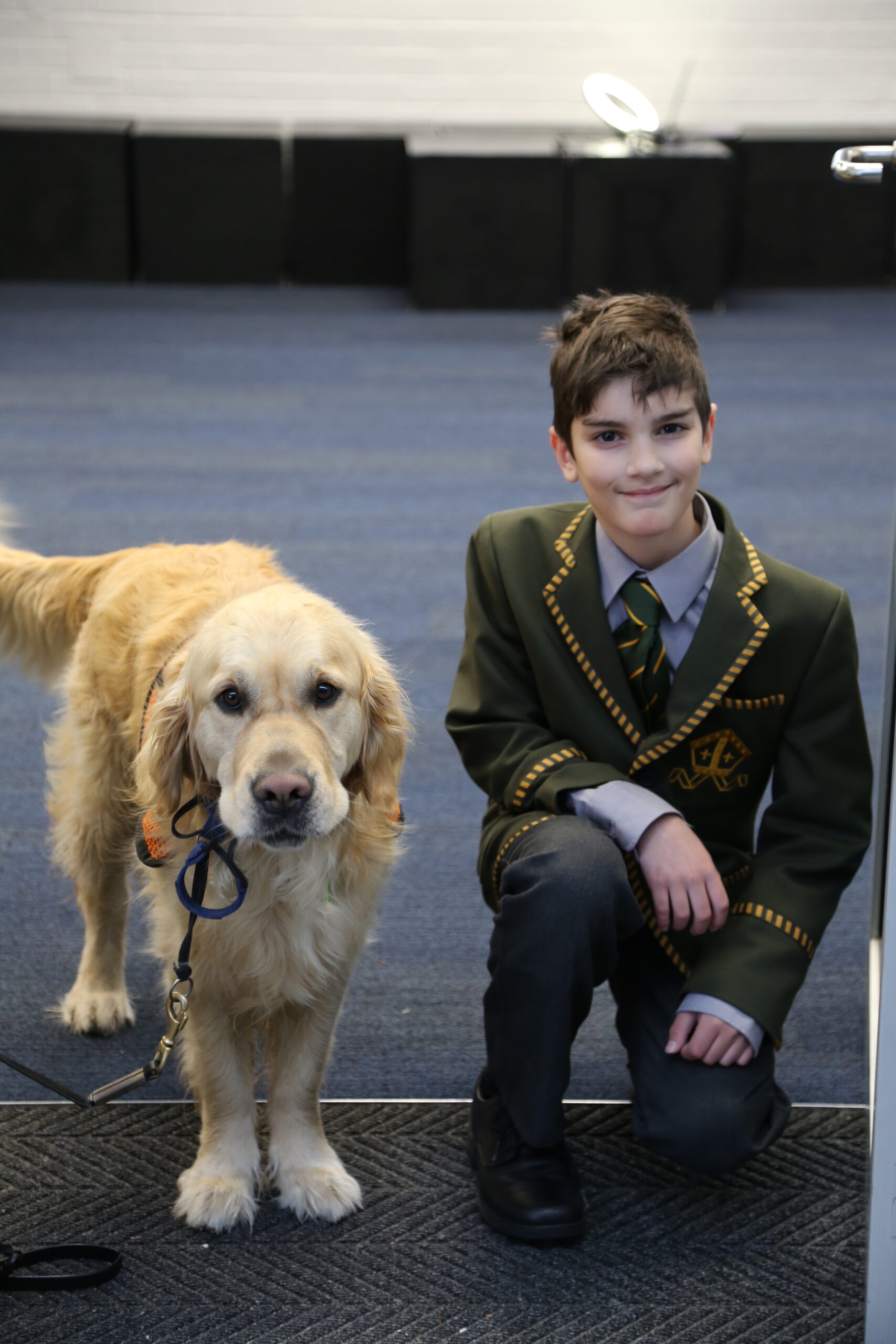
What does doing things the ‘Trinity way’ mean to you?
We asked four members of the community to respond.

Portraits by Year 10 students Lang Qin and Jerry Tang.
For his portraits of Louise Ross (parent) and
Ethan Peng (student), Lang used oil paint on canvas.
For his portraits of Ewoud Botha (staff) and Tom Young (OTG),
Jerry used various digital sketch tools on Procreate.
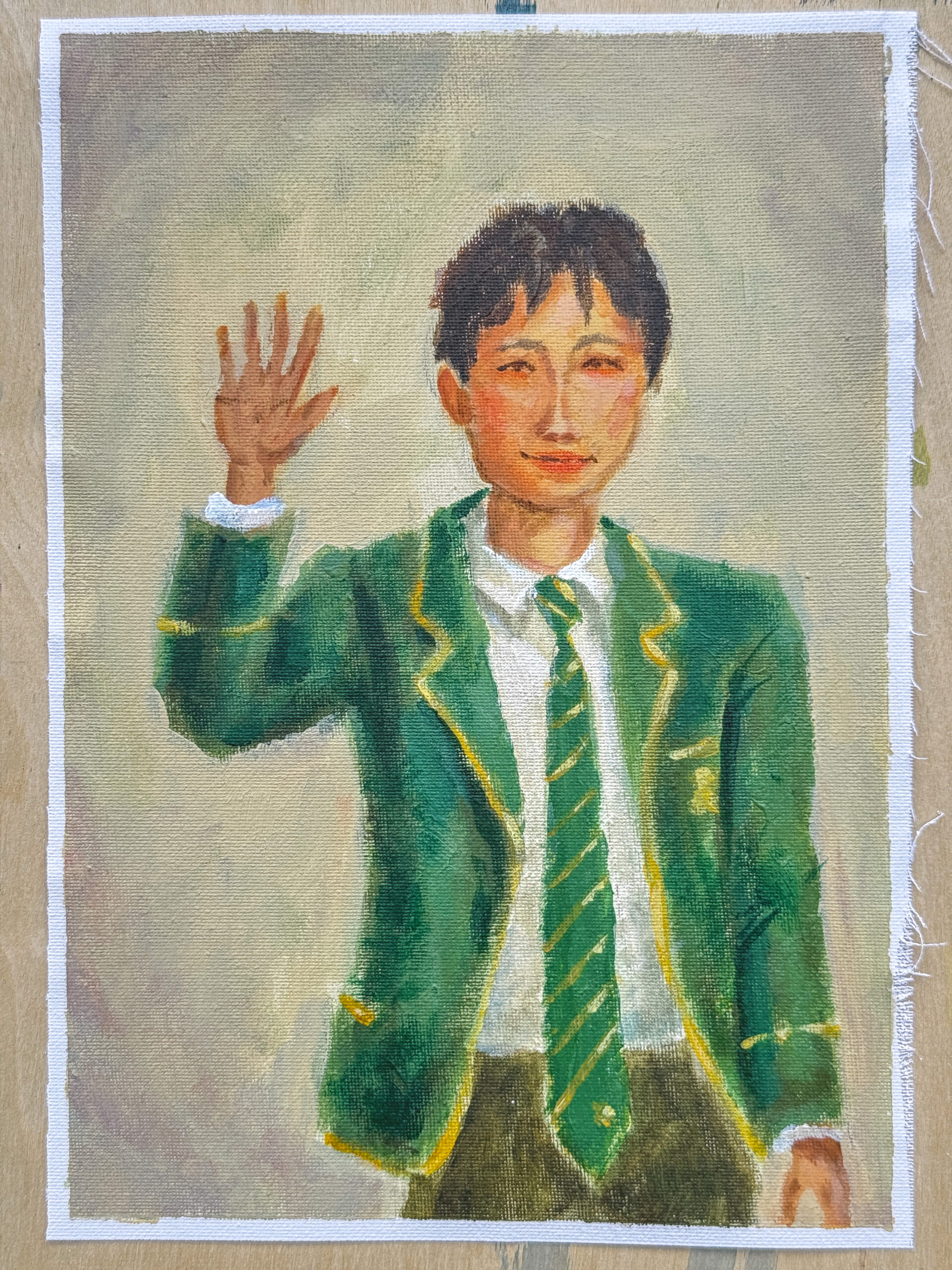
Ethan Peng
Trinity Year 8 student
In the classroom, the ‘Trinity way’ is all about lifting each other up, representing the school positively and sharply in outside activities and staying humble. The ‘Trinity way’ helps students develop their character and increase their confidence, encouraging them to believe in themselves and trust that they can achieve their goals.
At Trinity, the Maths classroom is a place brimming with discussion and collaboration, turning students into engaged learners who seek their own solutions. The ‘Trinity way’ in the Maths classroom is about pushing yourself to the limits and trying as hard as you can to solve a problem, overcoming failures and continuing to give everything your best shot.
This way, we’re able to develop our problem-solving abilities and empower those around us to succeed and achieve great results. Turning an ordinary classroom into a place full of bright minds working together to embark on the next adventure.
As a passionate Maths student, representing Trinity in many competitions and events, Maths lets me teach and be taught. This is what I believe is the true gift of the ‘Trinity way’.
Louise Ross
Trinity parent and Friends of Football convenor
Doing things the ‘Trinity way’ isn’t easy to describe, but as a parent, I see the result as an invisible hug that creates a culture of inclusiveness and community for all.
Over the last eight years, both my boys have had access to not only highly capable teachers to support their education, but doing things the ‘Trinity way’ has ensured they feel connected, engaged and supported through their sports by their teachers. Whilst this benefit cannot be measured or marketed by an ATAR; it’s the mental and physical benefits to the students that parents value during these adolescent and formative years.
Doing things the ‘Trinity way’ is less about playing for the win in sport, but rather the respectful engagement and the friendships for all from being involved in sport. Doing things the the ‘Trinity way’ is also about ensuring all abilities are welcome. With positive engagements in sport, the benefits of participation extend well beyond secondary school years.
As an active parent volunteer in the Trinity sports program, in particular Football and Snowsports, doing things the ‘Trinity way’ is also very much predicated on the unique trust between the parent community and the school in ensuring we all work harmoniously together to play our part in keeping sports fields a safe, fun and welcoming space for the students, parents and staff.
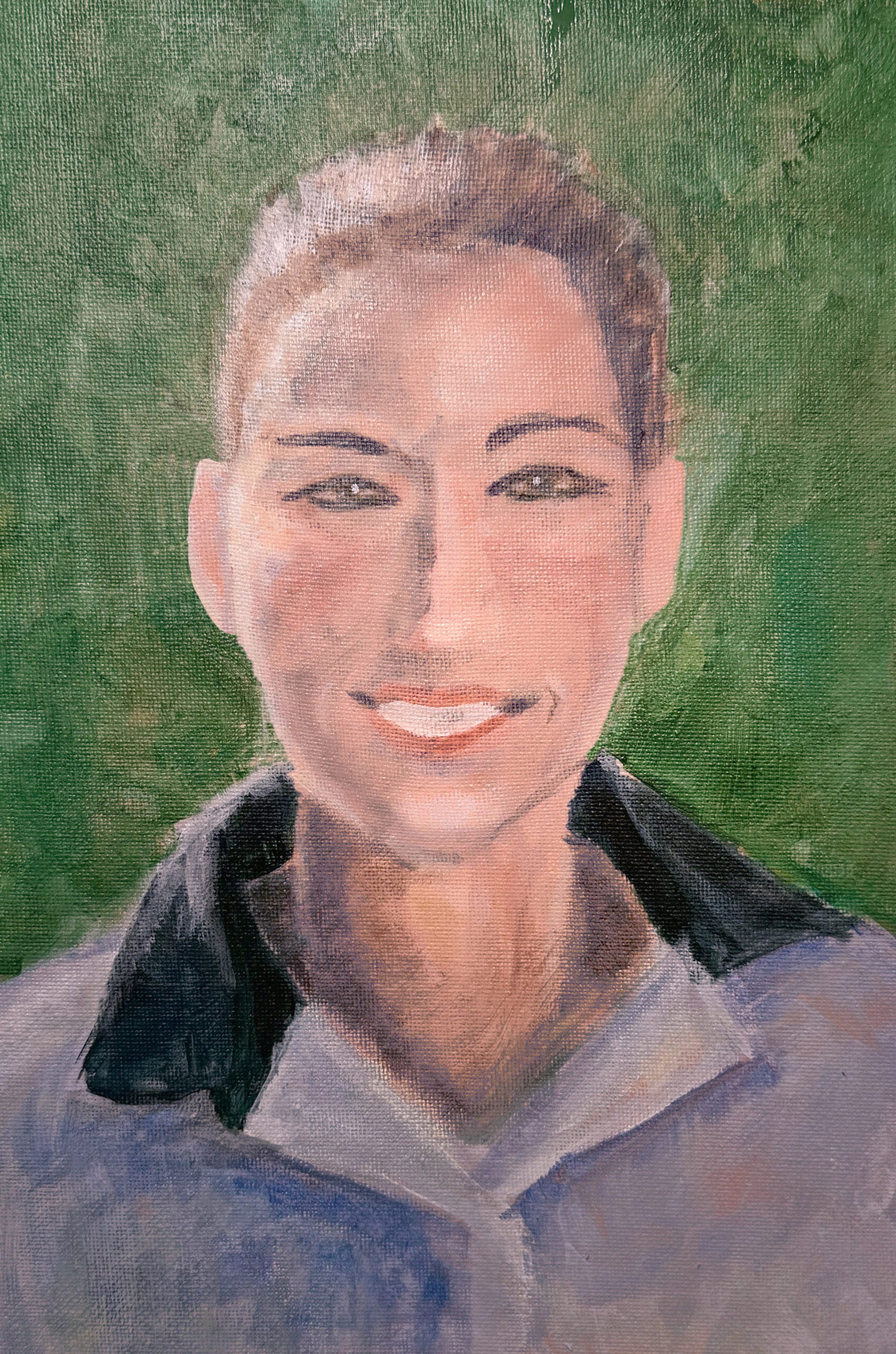

Ewoud Botha
Trinity teacher and Teacher in Charge of Rugby
Wearing the ‘green and gold’ has long been something for me even before I set foot on the shores of Australia. It is every boy and girls’ dream to wear the green and gold of South Africa one day. As with achieving the glory of wearing the green and gold, it is never handed or given to you, it takes hard work, dedication, grit and passion to achieve this. But as I sit so far away from my country of birth, I have found a new green and gold to be proud of and work hard for, I have found another reason to achieve and throw passion into, the green and gold of Trinity Grammar School, Kew.
You see, the ‘Trinity way’ is not just a slogan or a fancy way to use a new font, it is something that runs deep, to be a better person not just today but for the future too. Like all journeys, it has its ups and downs, its challenges and rewards and along the way you meet people that themselves believe and live the ‘Trinity way’, and it is those that we hold dear to our hearts and count as lifelong friends and confidants.
Can I myself be better in the passions I have and the things I do? Can we as a school be better in what we do? Absolutely we can. In order to be the best, you can’t accept good to be excellent. Excellent needs to be exceptional, only then can you achieve that high standard and the ‘Trinty way’, the people, the passions and their care is there for all of us to realise our own dreams along with others.
Tom Young (OTG 2014)
Trinity alumnus
To me, the ‘Trinity way’ means approaching every challenge with integrity, humility and a relentless commitment to excellence. On the sports field – particularly in football for me – it’s never just about the scoreboard. It’s about how you play: with discipline, respect and pride in representing your team.
Over time, I’ve come to believe that great teams are built not just on talent, but on character. The most successful clubs I’ve been part of were led by individuals who put the team first, supported one another, and led by example – on and off the field. That, to me, is the essence of the ‘Trinity way’.
Though it’s been a while since I was in the classroom, those values continue to shape how I work and lead today. Whether collaborating with others or taking initiative independently, I strive to act with honesty, resilience and a mindset of service. The ‘Trinity way’ taught me that true success is grounded in character – and in the choices you make to grow, support others and lead with purpose.
Ultimately, the ‘Trinity way’ is more than a set of values-it’s a mindset. One that prioritises character as much as achievement, and challenges you to leave a positive mark wherever you go.

Student artwork
Photography portrait
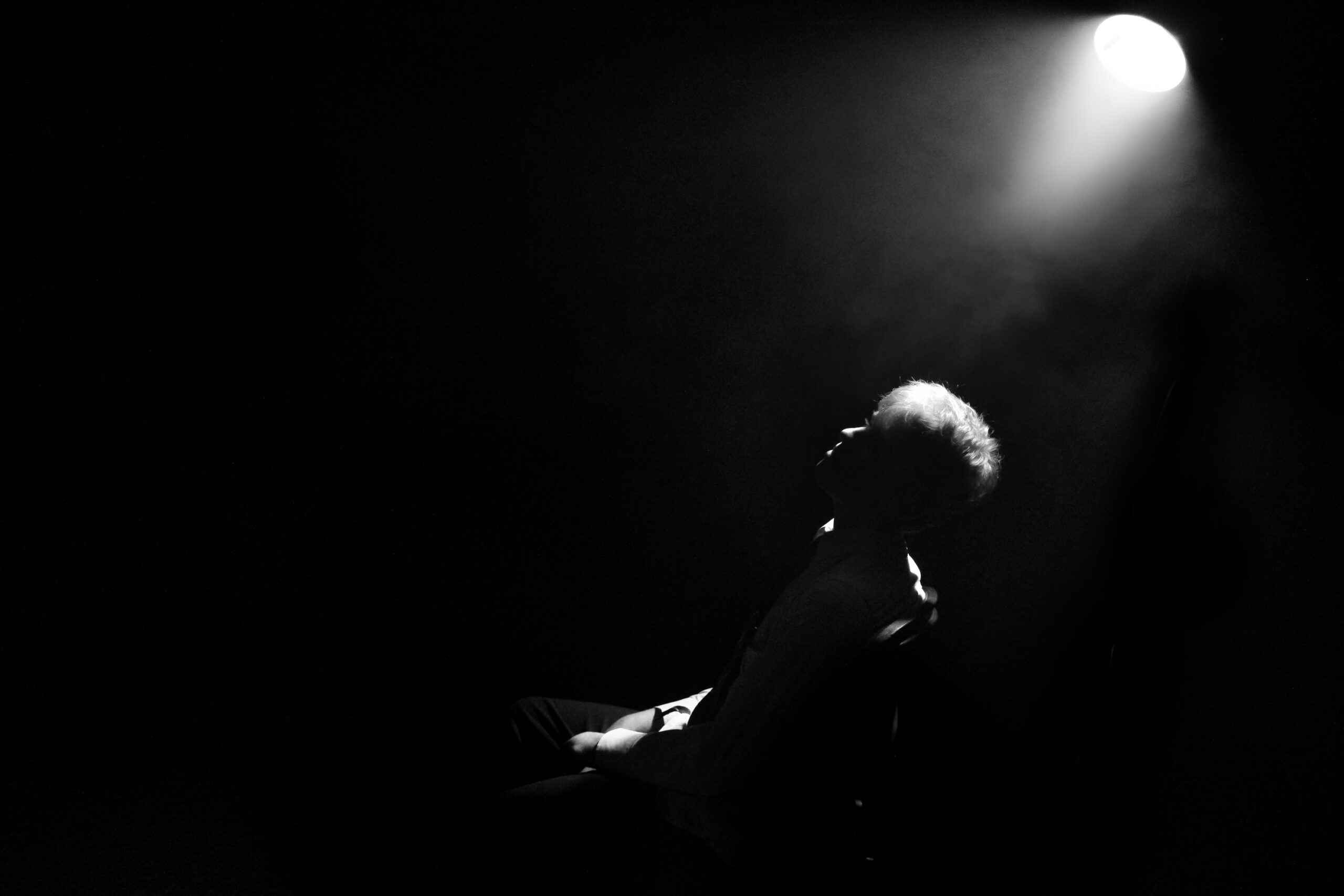
The portrait was taken in a Year 10 photography class where students were tasked to research lighting, positioning and composition to create their own photoshoot. Students then refined and edited their shots to define a final portrait.
Toby took inspiration from black and white photos with a mysterious feel, using lighting to highlight the face, shoulders and neckline.
– Toby Soesanto, Year 10

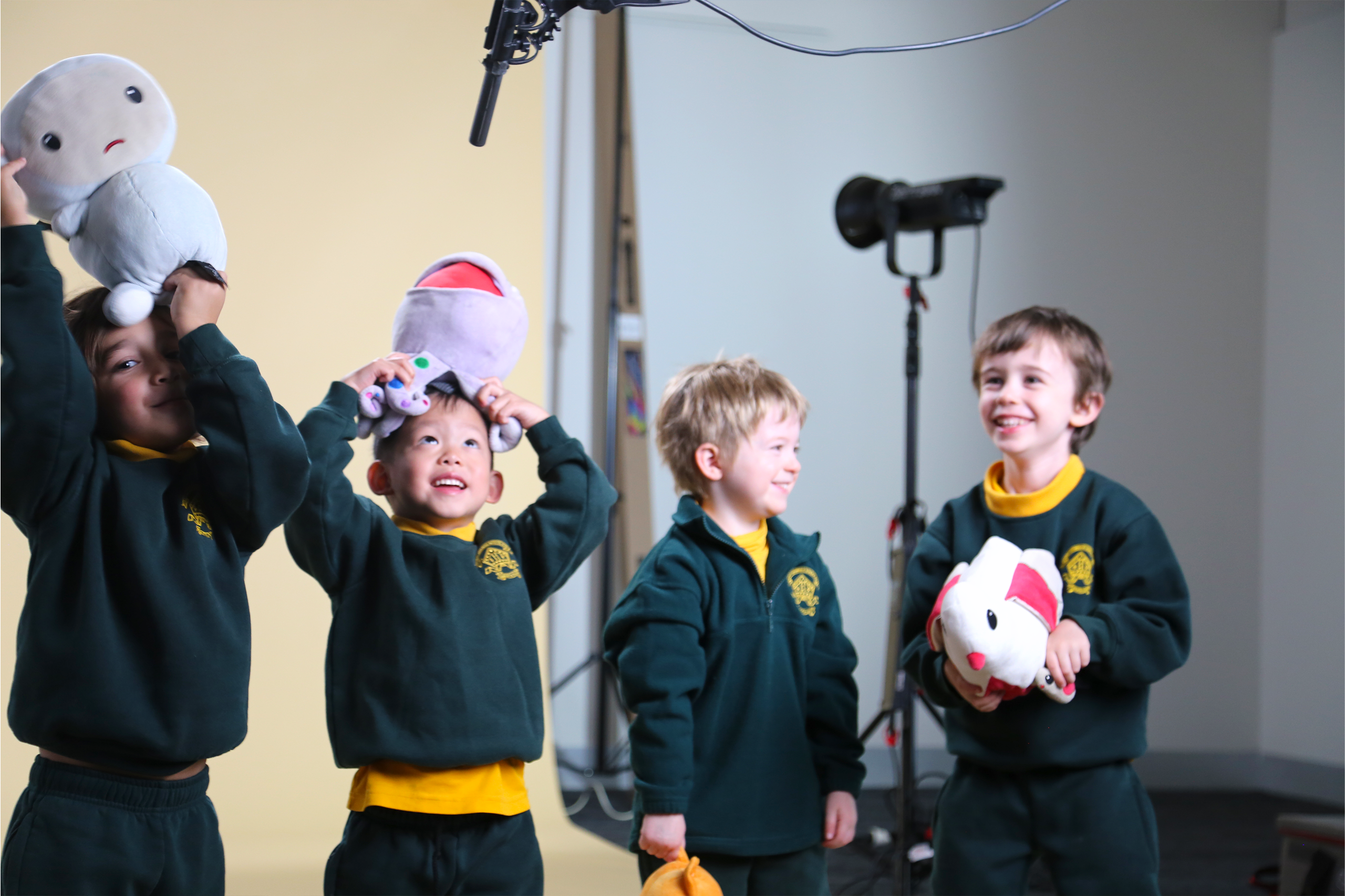
A research-backed whole-school wellbeing curriculum for Trinity Grammar School, Kew
Meet ‘Huggtopus’ – a cheerful, round, purple octopus with bright green spots on her tentacles and a big heart to match. She’s one of the Kimochis – a playful cast of characters designed to help young children recognise, understand and talk about their feelings in a safe and engaging way.
At Trinity’s Early Learning Centre, Huggtopus supports students to build important social-emotional skills, like setting healthy boundaries, staying focused and practising patience and empathy. Her favourite colour is pink, and her lucky number is eight – but her most important job is helping children feel seen, heard and supported.
Huggtopus is just one part of Personal BEST – Trinity’s newly-launched wellbeing curriculum that spans from ELC through to Year 12. Grounded in sport and performance psychology, and shaped by the school’s core values, Personal BEST empowers students to grow through the pillars of Belong, Engage, Strive and Thrive.

Belong
Inclusion, respect, safety and relationships
Engage
Encouraging active learning, metacognition, creativity, and strong communication
Strive
Identity, character, resilience, compassion, service and help-seeking, encouraging goal-setting, persistence and personal effort
Thrive
Promoting overall wellbeing and healthy development supporting ambition, goals, purpose, passion, leadership, pathways and performance
This whole-school approach is designed to give students practical, age-appropriate tools to support emotional regulation, build healthy relationships, manage stress, navigate social media and embrace learning with confidence.
Naomi Wright, Director of the Murray Verso Centre for Early Childhood Learning, says emotional wellbeing is the foundation for growth across every area of a child’s life.
“By helping young children name their feelings and understand how their actions affect others, we’re laying the groundwork for the deeper skills they’ll continue to develop as they move into primary school and beyond,” Naomi said.
Emotional learning is a journey – not a destination – and it begins in those vital early years with thoughtful, evidence-based practices like these.
– Naomi Wright
The Personal BEST curriculum was officially launched in June at a sold-out event, headlined by special guest Craig ‘McFly’ McRae, Head Coach of the Collingwood Football Club. Craig shared powerful messages on mindset, connection and the value of lifting others up – inspiring students to aim for their personal best, not only in sport, but in every aspect of life.
From a hug-loving octopus to high-performance psychology, Personal BEST is helping Trinity students grow with heart, courage and a strong sense of self – one step at a time.
Annual Financial Report
Mark Glover, Director of Business
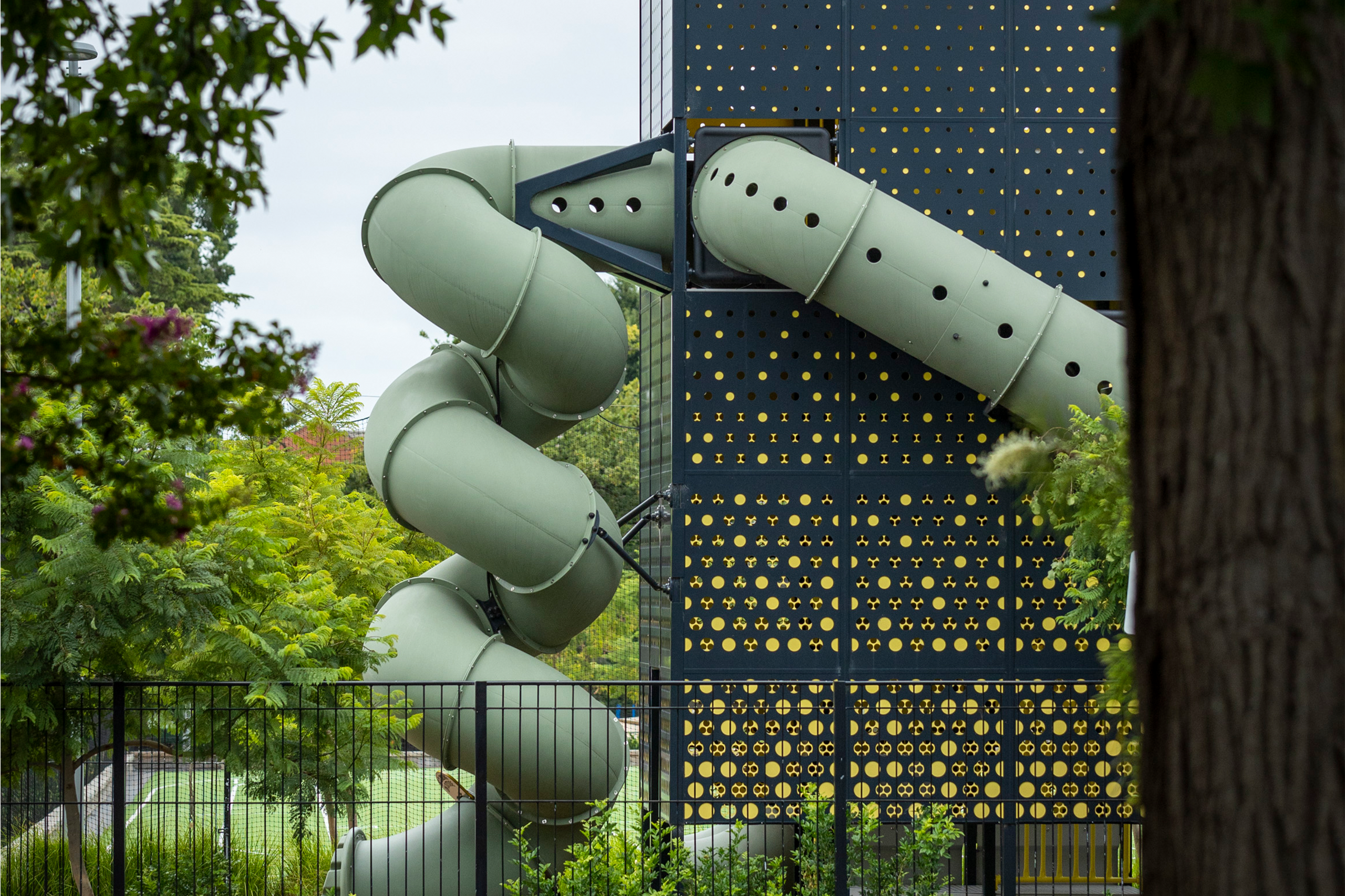
2024 was another outstanding school year, be it in the classroom, on the sporting field, performing on stage or supporting and serving the wider community. The continued good work by our staff and students, supported by the School Council and parent community, has allowed the 2024 school year to sustain a strong enrolment position, with outstanding academic and cocurricular results, underpinned by ongoing high levels of community engagement.
Whilst the school’s financial position at the end of 2024 remained very sound, the decision by the Victorian State Government to remove a century-old exemption and impose payroll tax on more than 50 independent schools this year has resulted in the need for higher than forecast tuition fee indexation to counter this new school tax. At Trinity, the diligent work of our Finance Team allowed us to avoid having to pass on the full cost to our families through a revision of our expenditure and being able to achieve that without impacting on people and programs is testament to those efforts.
The financial program for the year aligned well with the budget and forecast position set by the School Council recognising the need for strong deliverables and student learning outcomes. The Council was conscious of the cost-of-living challenges faced by families and delivered a responsible budget program that enabled and supported a vibrant student learning program.
The school was able to navigate a range of important enabling capital works, titled ‘Stage 0’, which needed to be completed to allow the endorsed Masterplan to kick off with no impediments once statutory approval is received. In preparation for the Development Approval green light, a range of enabling works was undertaken including the refurbishment of the Robertson and Shann Buildings, the demolition of E-Block, which was replaced by a new two-storey six-classroom modular building (now known as the Batson Building), followed by a range of upgrades to a number of the school’s residential properties, and interim relocations whilst the works were occurring. Additionally, in relocating the Year 7 cohort to the Batson precinct, we completed an upgrade of Merritt House late in the year to accommodate three homerooms and adjoining locker and break out spaces.
Masterplan works continued at the Marles Playing Fields in Bulleen, whilst navigating the impact of the North East Link Project (NELP) tunnel construction on and adjacent to our site. The new Caretaker’s residence was completed on Barak Street and town planning permission was granted to commence the construction of the new Grounds Facility. Submission of the planning application for the new Pavilion was lodged, this being the final major project supported by the Funding Agreement with the State Government.
The Treasurer presented details of the 2024 Financial Year at the Annual Community Forum and at the recent Annual General Meeting of the School. A summary of the financial position of the school, along with comparative information, has been provided in graphs and tables.
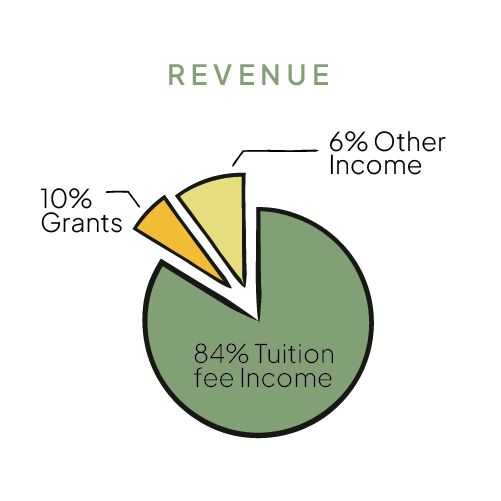

2024 Financial Results & Compartives
| Income | 2024 | 2023 |
| $’000 | $’000 | |
| Tuition fee income | 59,906 | 55,406 |
| Grants | 7,261 | 7,230 |
| Other income | 4,467 | 4,225 |
| 71,634 | 66,861 | |
| Expenditure | 2024 | 2023 |
| $’000 | $’000 | |
| Academic salaries and on-costs | 33,731 | 31,928 |
| Education expenses | 8,240 | 7,646 |
| Scholarships and bursaries | 3,427 | 3,250 |
| Depreciation (non-cash) | 5,108 | 5,310 |
| Maintenance, cleaning and grounds | 5,228 | 5,894 |
| Administration expenses | 10,010 | 8,453 |
| Significant one off and non-cash items | 2,332 | 77 |
| Finance and other costs | 58 | 381 |
| Payroll tax | 1,221 | – |
| Retained for capital development | 2,279 | 3,922 |
| 71,634 | 66,861 |
The chart below details the comparative fundraising income that has been generated by the School:
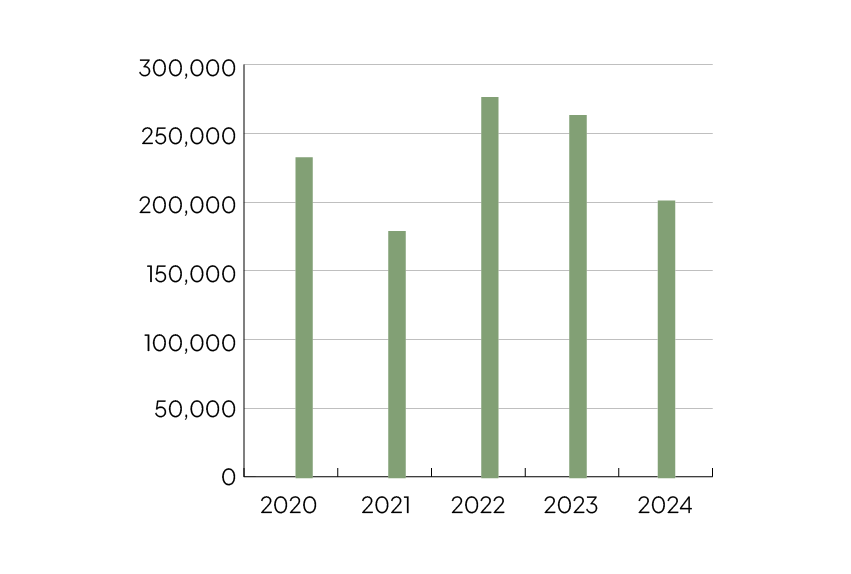
Copies of the audited Financial Statements can be obtained from the office of the Director of Business.
